A comprehensive guide to part-time PhDs
Doing a PhD part-time can be an attractive option for many reasons. However, part-time PhDs are less common than full-time ones, and there tends to be a lack of information on this option. This guide to part-time PhDs answers the most common questions that prospective part-time PhD candidates have.

The difference between a part-time and a full-time PhD
How much work is a part-time phd, how long does it take to do a phd part-time, where is it possible to do a phd part-time, benefits of a part-time phd, disadvantages of a part-time phds, is it worth doing a part-time phd, skills necessary for completing a phd part-time, conditions for success in a part-time phd, online part-time phd programmes, ten questions to ask yourself before embarking on a part-time phd.
The main difference between a part-time and a full-time PhD is typically the amount of time that a student spends per week on PhD-related tasks. The typical length of a full-time work week is five 8-hour days, comprising 40 hours in total. In some countries, this includes breaks. Thus, 38-40 hours/week can generally be considered full-time employment.
A part-time PhD carries fewer hours per week than full-time employment.
Precise definitions of part-time work differ. While some consider part-time employment as anything less than 38 hours/week, the OECD for instance defines part-time workers as those who work less than 30 hours/week.
Some universities have minimum requirements for part-time PhDs, for example, a minimum of 20 hours/week. Others, however, are more flexible. They allow part-time PhD candidates to spend anything between a few hours to several days per week on their part-time PhD studies.
Coursework that is required in PhD programmes is generally adjusted to part-time candidates and stretched over a longer period. The same is true for certain deadlines and comprehensive exams if required.
The degree that is awarded upon successful completion of a part-time PhD is the same as those being awarded for completing full-time programmes.
Most degree certificates don’t even mention that a PhD was pursued on a part-time basis. There is no reason to worry that a part-time PhD degree may be perceived as worth less than a full-time one.
A part-time PhD requires pretty much the same amount of work as a full-time PhD. Part-time PhD programmes are spread out over a longer period, but the requirements in terms of credits and output ( a monograph or cumulative dissertation ) are usually the same.
Part-time PhD candidates are often highly aware of their time limitations. In turn, they may be better at utilizing their limited time during the week. For instance by minimizing procrastination, prioritizing tasks and making strategic decisions. However, this is difficult to generalise.
Part-time PhD students may be more inclined to work during evenings and weekends.
Other responsibilities during the ‘normal’ working hours result in less attention to PhD-related work. And sometimes, PhD work requires several hours of uninterrupted deep work.
In some cases, the lack of opportunities to focus on the PhD for a longer period can increase frustrations and stress levels. This is particularly true when part-time PhD students start together with a cohort of full-time PhD students and compare their progress with that of their full-time peers.
Ultimately, how much work a part-time PhD requires depends very much on a student’s research project, personality, efficiency, subjective perception of workload and stress, supervision, luck with experiments, and so on. This does not differ from a full-time PhD.
In most cases, a part-time PhD takes longer than a full-time PhD. A general rule of thumb is that the fewer hours someone spends on a PhD per week, the longer it takes to complete it.
The number of years that full-time PhD students take to complete a PhD varies. Some finish in three years. Others require four, five or more years. Thus, there is a huge variation in the time it takes to finish a PhD. The same is true for part-time PhDs.
There are also differences between universities. Some universities have a strict programme that takes, for instance, three years for full-time PhD students and six years for part-time PhD students.
Other universities adapt to the specific circumstances of individual PhD candidates. They may allow someone to finish a part-time PhD in three years as long as all requirements are met. But they may also be okay with a part-time candidate who spends a decade on his or her PhD studies.
Can you complete a part-time PhD programme? Yes, absolutely.
But due to the vast differences between universities as well as PhD programmes, it is essential to inform yourself properly before applying for a part-time PhD.
The regulations in terms of length of a part-time PhD have a major effect on a PhD trajectory, time planning, tuition fees if applicable, etcetera.
There are plenty of opportunities to do a PhD part-time, but the specific opportunities and arrangements depend very much on individual universities.
Some universities advertise specific part-time PhD programmes on their web pages. Or, with a little bit of digging, provide information online for those who are interested in part-time PhDs.
For other universities, it is difficult to find any information on part-time PhD programmes online. This does not always mean that there are no opportunities. Sometimes, it requires sending emails to the admissions office, or contacting a potential PhD supervisor directly to ask for part-time possibilities.
There are also differences in national contexts. In some countries, for instance, in Germany, part-time PhD studies are often the norm. In Germany, many paid positions exist that encompass 60% of a full-time equivalent: time during which a PhD student is required to work in a lab or assist a professor. In the remaining 40% of the time, which is unpaid, a PhD student is expected to work on a dissertation.
In some other countries, PhD students tend to be employed in the public sector, receive a salary and make pension contributions. In those cases, they tend to fall under the same regulations as the non-academic workforce. This can mean, for instance, that they have the right to change their contract to part-time, for instance in the case of care responsibilities.
There are many benefits to doing a PhD part-time. Some of the most common advantages are
- More secure finances: Many full-time PhD students experience financial insecurities because PhD scholarships are often not enough to cover living expenses, or do not cover the whole PhD trajectory. Part-time PhD students often work next to their PhD studies which provide additional income and a layer of financial security.
- Improved employability: This includes industry employability and employability in academia. Industry employability is enhanced if someone already gains substantial work experience outside academia, through working in a certain profession while doing a part-time PhD. Employability in academia is enhanced if someone already gains academic work experience (for example as a research assistant) and teaching experience (for example as a junior lecturer or teaching assistant) while doing a part-time PhD.
- Flexibility: Doing a PhD part-time tends to provide increased flexibility. For instance, students who have care responsibilities are more likely to be able to combine their PhD studies with their other responsibilities on a part-time basis.
- Efficiency: The advantage of many part-time PhDs is that they are very aware of their time limitations and force themselves to be strategic in their choices. Part-time PhD students also often benefit from existing work experience and tend to be a bit older than full-time students. Combined, they sometimes are more confident and struggle less with imposter syndrome. Since procrastination is essentially linked to a fear of failure, part-time PhD students on average may be more confident, suffer less from procrastination and are therefore able to work more efficiently.
There are also disadvantages and challenges in part-time PhDs. Some of the most common disadvantages of doing a PhD part-time are:
- Difficulty to maintain a work-life balance: ‘Getting it all done’ is always challenging. Adding a part-time PhD to existing tasks, activities and responsibilities can negatively affect a person’s work-life balance. Part-time PhDs frequently require multi-tasking, which can interrupt the flow of work and lead to mistakes. Furthermore, evenings, weekends and holidays may be the only times when uninterrupted PhD work for several hours or days is possible. When part-time PhD students are not very good with boundary setting, they can easily feel overwhelmed and as if they can never take a break.
- Tuition fees: While not all PhD students (regardless of whether full-time or part-time) have to pay tuition fees, many do. Tuition fees tend to be adjusted in part-time programmes. Nonetheless, paying tuition fees for several years can be a financial burden. In addition, part-time PhD students are not always eligible for all scholarships and funding opportunities.
- Less supervision: Part-time PhD students often work even more independently than their full-time counterparts. Of course, the amount of supervision differs for full-time PhD students as well. However, a simple reason for less supervision is simply that part-time PhD students are not always physically present in a lab or department. They have less spontaneous interactions with their supervisors and other professors. It reduces the opportunities to ask a quick question or get feedback on a small issue. Part-time PhD students may be more reliant on more formal, scheduled meetings every few weeks or months.
- Feelings of isolation: Part-time PhD students may feel disconnected and isolated due to a lot of independent work, less physical presence and opportunities to connect with colleagues and peers. Furthermore, part-time PhDs tend to be in the minority, as full-time PhDs are still more common. This means that part-time PhDs may feel misunderstood and have no one to share their unique experiences and challenges with.
Following your curiosities and researching a topic in-depth can be a wonderful thing.
Yet, the question of whether a PhD part-time is worth doing or not is difficult to answer. It depends on the unique situation and ambition of each person in question.
Some people embark on a PhD part-time to progress in their career. Some people hope for a financial reward after completing a PhD part-time. Some people intend to change careers and use a part-time PhD to start the process while still earning money in a different job. Some people look for a challenge and embark on a part-time PhD for self-fulfilment. Some people have no other option but to do a PhD part-time.
Every person has to decide for him- or herself whether it is worth it, sensible and feasible. The decision requires a lot of self-reflection, and financial and life planning.
The decision to do a part-time PhD should not be treated lightly.
Completing a PhD part-time requires several skills. These skills can be learnt. However, a complete lack of these skills at the start of a part-time PhD will make the trajectory much more challenging.
First of all, part-time PhDs benefit from a high degree of self-discipline.
Those who struggle to motivate themselves and to get the smallest task done without any external pressure, might not be the best candidates for part-time PhDs. Part-time PhD work requires a lot of self-discipline as well as self-motivation.
Next, the ability to multi-task and keep a cool head in stressful situations is a big advantage for those who embark on a part-time PhD.
Stressing out easily and feeling easily overwhelmed with many tasks and deadlines, on the other hand, is counterproductive in a part-time PhD.
Furthermore, flexibility and the ability to adapt to different circumstances is pivotal.
Part-time PhD students tend to wear many different hats. They need to be able to switch between different roles and juggle lots of different tasks and responsibilities.
Additionally, not everything will work according to plan. Part-time PhD students have to accept that things do not always work out as expected and have to quickly adapt to new situations.
Lastly, the ability to work independently can make or break a part-time PhD trajectory. Working on a PhD part-time often means working from home, alone, without social interaction and constant feedback opportunities. Not everyone is cut out for this type of work.
A fundamental condition for success in a part-time PhD is the selection of a fitting research topic.
As in any PhD, regardless of whether full- or part-time, a PhD student spends many waking hours on the topic. If the topic is not interesting to the PhD student, and he or she is not passionate about it, motivation to work on it will inevitably decrease over time.
At the same time, the most passionate and skilled PhD student may still struggle if the institutional environment and supervision are suboptimal.
A supportive institutional environment that assists, accommodates, and invests in part-time PhD students can make a world of difference.
Probably even more important than the institutional environment is a good relationship between the part-time PhD student and PhD supervisors.
The quality and quantity of supervision matters, but also the social compatibility between students and supervisor/s. Therefore, applying to a programme without having ever met the prospective supervisor in person is a risky business.
If a prospective PhD student intends to continue working part-time in a different job, all parties should be informed and agree with the arrangements. If there is a connection between the PhD topic and the job, some employers even enter a formal arrangement that allows the student to do PhD work during some ‘normal’ working hours.
Pulling off a part-time PhD without all parties approving, or even knowing about it, can create a lot of problems along the way.
Lastly, a certain degree of financial security is required. Of course, this depends on the unique financial arrangements made by a part-time PhD. However, if other work, scholarships or grants are not enough to cover living expenses during a part-time PhD, it is not advisable to embark on this journey.
While online, part-time PhD programmes were available before the Covid19 pandemic, they have become much more common in the last two years. There are some strong opinions when it comes to online, part-time PhD programmes.
Proponents of these online programmes highlight how they can help to create a more level playing field . It allows PhD candidates, for instance, to live in a low-cost living area, while following a PhD at a prestigious university in a high-cost of living area.
Opponents lament the decreasing quality of PhD supervision in online PhD programmes. Some argue that doing a PhD increasingly becomes increasingly financialised, with universities collecting tuition fees but not providing adequate support.
However, with everything, this is very difficult to generalise . It requires prospective PhD students who are interested in these programmes to inform themselves thoroughly and to decide on a personal basis whether an online programme is a good fit or not. Speaking with others who already do, or finished, online part-time PhD programmes might be particularly useful.
If you consider embarking on a part-time PhD, your decision can be supported by asking (yourself) the following questions:
- What is my motivation to do a part-time PhD?
- Am I passionate enough about my (potential) research topic to spend several years working on it?
- What are the potential advantages and disadvantages of doing a part-time PhD, and how can I mitigate the disadvantages?
- Do I have enough self-discipline and endurance to do a part-time PhD with limited supervision?
- Do I have the flexibility to incorporate potential coursework into my day-to-day agenda?
- How many hours/week do I want to spend on my PhD, and how many hours can I (afford to) spend on it?
- What are the part-time PhD regulations of the university/universities where I consider applying?
- Is the (potential) PhD supervisor a good fit, and does the institutional environment seem supportive of part-time PhD students?
- How can I finance the part-time PhD?
- What do I want to do after completing the PhD?
Get new content delivered directly to your inbox!
Subscribe and receive Master Academia's quarterly newsletter.
Public speaking in academia and how to practice it
Strong academic networks through shared activities, related articles.
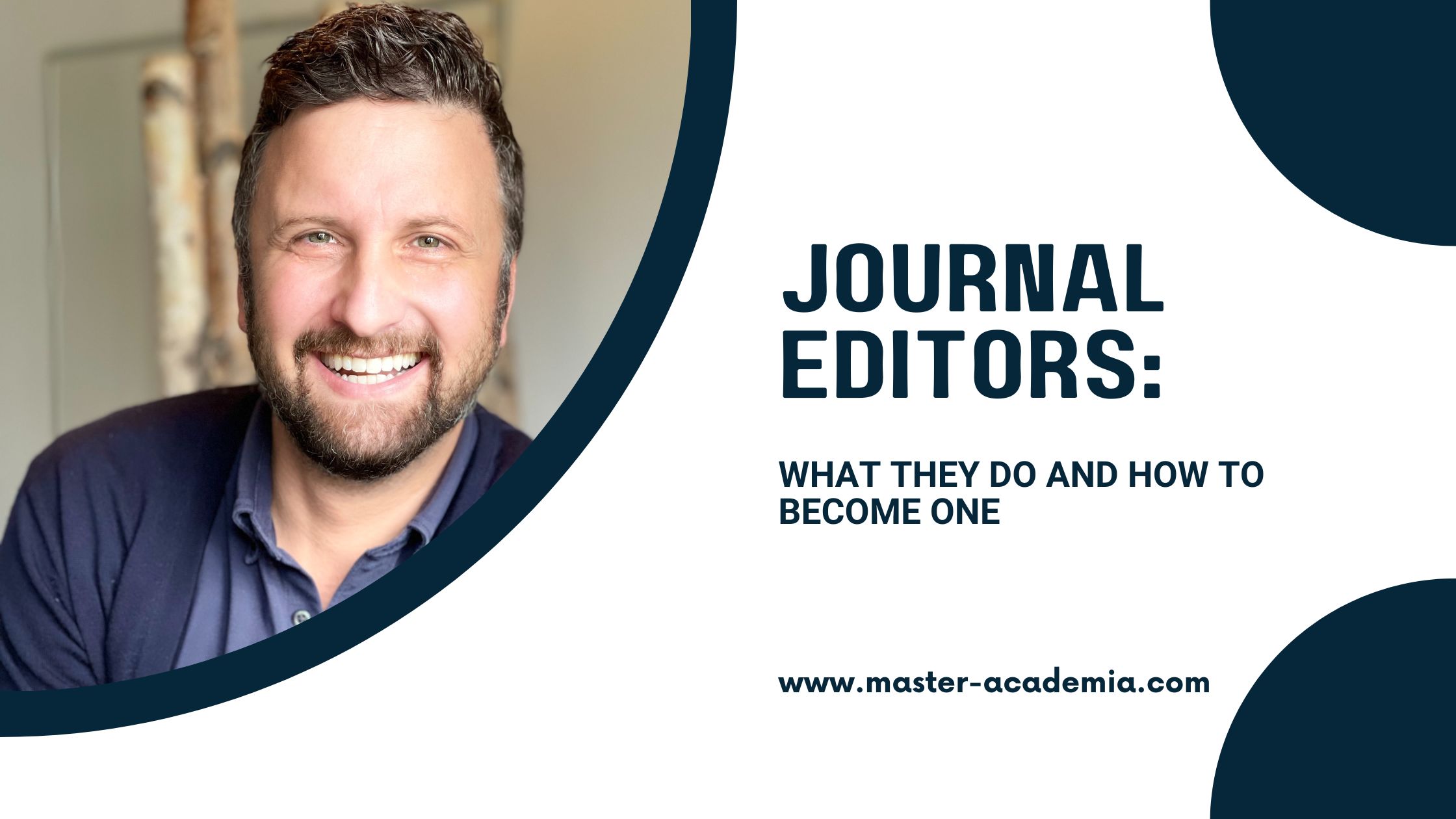
Journal editors: What they do, and how to become one
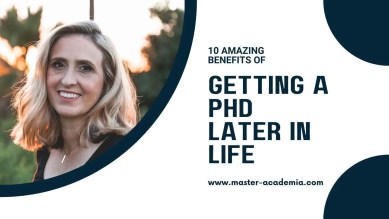
10 amazing benefits of getting a PhD later in life

The best answers to “Why do you want to do a PhD?”
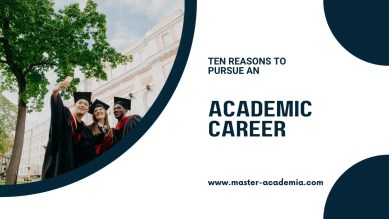
Ten reasons to pursue an academic career
You're viewing this site as a domestic an international student
You're a domestic student if you are:
- a citizen of Australia or New Zealand,
- an Australian permanent resident, or
- a holder of an Australian permanent humanitarian visa.
You're an international student if you are:
- intending to study on a student visa,
- not a citizen of Australia or New Zealand,
- not an Australian permanent resident, or
- a temporary resident (visa status) of Australia.
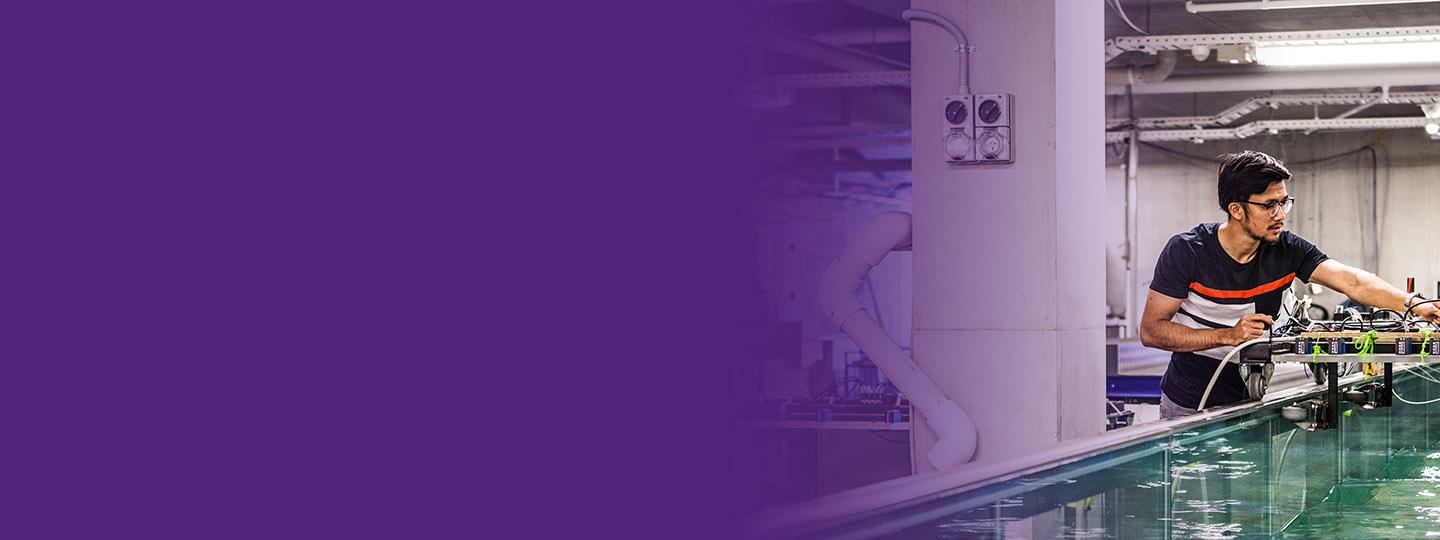
Can I do a PhD while working?
Study tips Published 31 Mar, 2022 · 4-minute read
Completing a Doctor of Philosophy requires some serious dedication. But committing all your time to research can leave a significant gap in your income. So, can you work and do a PhD at the same time? Let’s find out.
We spoke with two UQ PhD candidates, Chelsea Janke and Sarah Kendall, to get some insights into whether you can get a PhD while working – and how to balance your work with your research.
Can you get a PhD while working?
The simple answer is yes, but we wouldn't exactly recommend it. There’s nothing technically stopping you from continuing to work (at least, to some extent) while you pursue a PhD, but doing a higher degree by research is a big commitment. So, you need to think carefully before you attempt to juggle both.
The more complex answer is that it depends heavily on the type of work you’re doing and how quickly you want to complete your research.
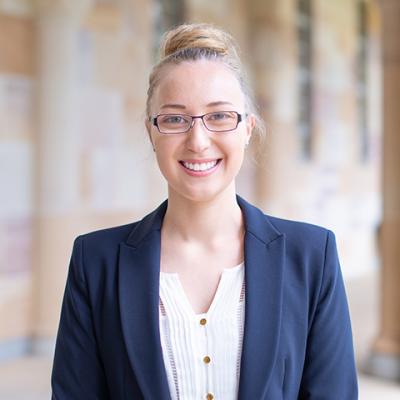
PhD candidates can continue working part time while completing their research. Of course, this depends on the nature of their research and other work.
Keep in mind : some PhD scholarships are only available to full-time candidates and may not allow you to earn more than a certain amount to remain eligible. If you’ve applied or plan to apply for a scholarship, make sure to check the relevant terms.
For international students , some extra restrictions apply. You can work up to 40 hours per fortnight, but this must not interfere with your full-time study load or your academic performance. Further limitations may apply if you're on an RTP scholarship (maximum 270 working hours per year) or being sponsored by your government.
Doing a PhD while working: full time, part time or casual?
Chelsea is quick to warn us that both working and researching full time is a recipe for disaster.
“A full-time PhD could not be done whilst working full time,” she says.
Doing both part time is feasible, but only if you’re happy to wait a few extra years to see the fruits of your labour.
“I know people who have worked part time and done their PhD part time – usually in the same research group or field,” says Chelsea.
“But keep in mind it took them 7-8 years to finish their PhD; it’s not the most efficient strategy.”
Committing to a full-time PhD while doing some incidental work on the side seems like the most popular approach for candidates, in Chelsea’s experience.
“Most full-time PhD students will pick up some casual work tutoring, marking, helping the lab manager, or assisting other researchers with their work,” she says.
“This means they can do a few hours here and there without their own PhD work being too disrupted.”
Sarah’s circumstances allow her to maintain a part-time job while completing her PhD, though she acknowledges you have to be lucky to be in a position to do so.
“PhD candidates can continue working part time while completing their research; of course, this depends on the nature of their research and other work,” says Sarah.
“Both my research and work are very flexible, and I can complete them whenever suits me.”
Learn about Sarah’s research or read her series about becoming an academic in law .
How to balance work with your PhD

If you plan to work whilst doing your PhD, you will need to manage your time well.
It’s one thing to ask can I do a PhD while working – actually managing to juggle the two is a whole other challenge. Sarah and Chelsea agree that time management is the most important part of making this work.
Sarah suggests keeping a strict schedule to divide your time evenly between your commitments, as this is what works for her.
“I find that I maintain a balance best by setting specific hours to work on my PhD (usually from 9am to 4pm Monday to Friday) and then on my other work commitments (usually Saturdays and sometimes a couple of hours before dinner),” she says.
“The hours you set to work on your PhD and other commitments will depend on whether your other work has set hours though, as well as when you work best – you might get some of your best research and writing done at 5am!”
Top tips for working while doing your PhD
- Only do so if you really want/need to and if you know you can manage the dual workloads.
- Tell your boss. Make sure your employer knows about your plans to juggle a PhD with your workload. See if there’s anything they can do to make the journey easier for you. For example, just like Sarah, your employer may be able to provide you the flexibility to complete your work on a schedule that accommodates your research hours.
- Consider a part-time PhD if cutting your hours or quitting your job isn’t a viable option. Yes, it might take longer. But if it means maintaining a comfortable balance between your research and your current career, it might be the best choice for you.
- Chat with your PhD supervisor. They’ve been there and done that, making them a great source of wisdom when it comes to pursuing a PhD while also balancing your other life commitments. You may also have peers currently doing a PhD who can provide some advice.
Haven’t chosen your supervisor yet? Read these tips for finding a suitable academic. It’s also a good idea to be upfront with your supervisor about your intention to work/research part time, as some supervisors prefer to work with full-time PhD candidates.
- Seek casual work at your university and in your field where possible. By keeping your work and research close together (both in terms of location and mindset), you may find it less challenging to keep on top of both.
- Make sure you’re passionate about your PhD topic . If your research just feels like a second job on top of your usual work, you’ll likely burn out before long. When developing your research proposal , make sure your thesis is providing that spark of curiosity that’s going to keep you inspired to follow through with your research – even on nights when you’re drained from work.
Ready to get started? Whether you’re dedicating yourself to a full-time PhD or keeping a balance between research and work, The University of Queensland is ready to support you.
Learn more about completing your PhD at UQ
Share this Facebook Twitter LinkedIn Email
Related stories
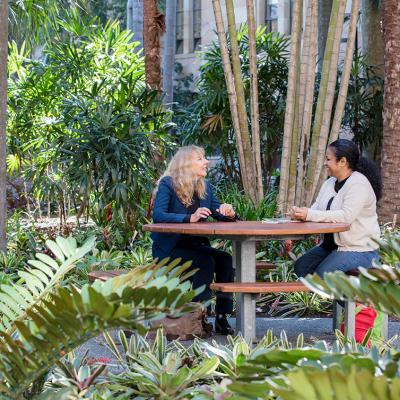
How to get a PhD scholarship or funding
3-minute read
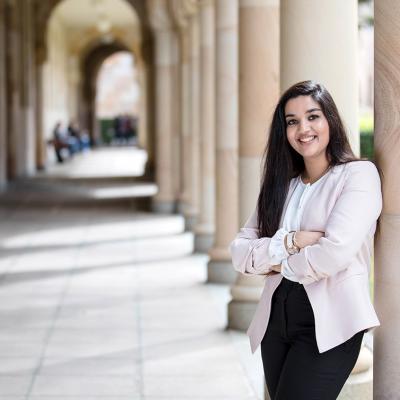
How long does a PhD take?
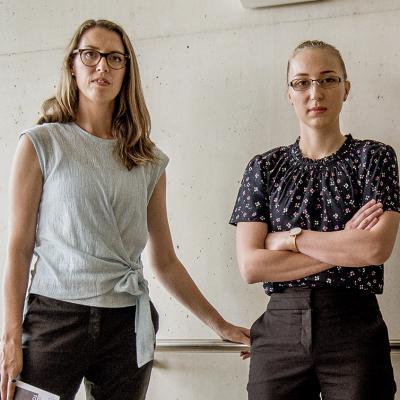
How to find a PhD supervisor
5-minute read
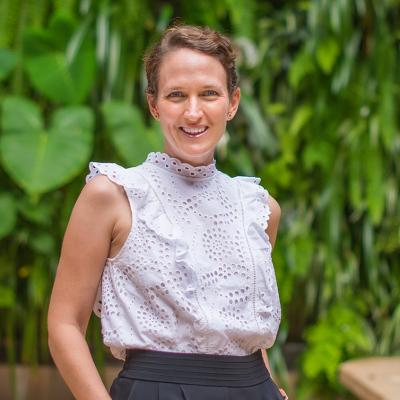
Is a PhD worth it?
9-minute read

- Part Time PhDs – Everything You Need To Know
- Types of Doctorates
Introduction
Whilst the core activities of a part time PhD are identical of that to a full time PhD, its arrangement is different. This difference is not only in programme duration but also in fees and funding opportunities. In addition to this, part time study also has different benefits and challenges. Therefore, whilst your personal situation may not be ideal for a full time PhD, it could be perfect for a part time one. We’ve outlined these differences as well as the pros and cons of part time study to help you decide whether it’s right for you.
Why Do a Part Time PhD?
Undertaking a part time PhD can be a great option for you if you fall into one of the four categories:
- Financial – a part time PhD provides the opportunity to earn whilst you study. Although you could secure a full time studentship, the stipend it offers may not be enough in all cases, for example, if you’re financially responsible for multiple family members.
- Career – working individuals, especially those who have already advanced several stages in their career, may opt for a Professional Doctorate. A Professional Doctorate is equivalent to a part time PhD, but focuses on a specific professional practice relevant to the individual. It’s usually undertaken when you wish to apply research skills in a professional environment or become more specialised in your industry.
- Caring obligations – part time study offers a greater deal of flexibility compared to its full time equivalent. This can be desirable in situations where the individual has considerable caring obligations, such as a young family.
- Intensity – many students feel that a pursuing a research degree over a longer period of time drastically lowers the intensity of postgraduate study. Part time PhD hours per week are typically around half that of its full time equivalent. This can come with a wide range of physical and mental health benefits.
Part Time PhD Fees
The average tuition fee for part time PhD study in the UK is approximately £2,356 per academic year for home students, and between £8,000 to £12,500 for international students.
This is typically 50% of the fee charged for an equivalent full time doctorate. However, a handful of universities use a prorated fee of up to 60% so it’s important to check the individual fees for each university you are applying to. These additional costs usually cover the admin/overhead fees associated with your time at the university.
Besides the tuition fee, there are several other costs which you need to account for. You can learn about these costs in our full cost breakdown of UK PhDs .
Part Time PhD Funding and Scholarships
As a part time student, most universities will expect you to fund your own studies. This is because nearly all part-time students will work a paying job alongside their studies which can be used to support their education.
However, you may still apply to department or university funding opportunities such as subject-specific bursaries. Besides this, external bodies such as Research Councils , research charities and industrial institutions also offer grants and PhD studentships for research projects related to their field. It’s worth remembering these opportunities are usually very limited and are awarded based on a candidates strength and not their personal situation.
One benefit of selecting a research project related to your employer is that it opens an additional opportunity for funding. It’s not uncommon for an employer to contribute to an employee’s tuition fee if there is a mutual benefit to be had.
How Long Is a Part Time PhD?
The average duration of part time PhDs in the UK is between 6 to 7 years. This is double a full time doctorate.
Universities also set registration periods which limit the minimum and maximum amount of time you can be enrolled in a course. For doctorates, the minimum duration is usually 4 years and the maximum 8 years.
How Many Working Hours per Week?
You will be expected to work half the number of hours of a full time student. Although full time students are expected to work 35 hours a week, in reality, most will work closer to 40 – 45 hours. Therefore, you’ll be expected to dedicate approximately 20 hours each week towards your degree.
However, you won’t always be able to achieve this many hours due to your other commitments. Therefore, working to a frequent and consistent schedule will be more important. Working on your research in irregular intervals or whenever time permits will be an inefficient approach – it’s far better, plus psychologically easier, to commit to a consistent schedule. Though your PhD supervisor may be able to offer guidance in this regard, ultimately the PhD is yours to shape.
Most part time programmes will also have some doctoral training courses with fixed dates, especially those which are organised by industry experts or visiting lecturers. There may also be time restrictions to be aware of if you are a postgraduate researcher involved in laboratory work, particularly where special equipment is needed as this may be rented by the university research centre and only available during certain times in the year.
Part Time PhDs for International Students
If you are an international student wishing to undertake a part time PhD programme in a foreign country, you will need to meet additional requirements.
For example, to study in the UK, you will need to secure both a work visa and a stable job. This is to prove that you can support yourself throughout the full length of your course. Unfortunately, even if you’re able to secure departmental or external funding, you won’t be able to use this to prove an income. Additionally, an international PhD student in the UK will need to demonstrate English proficiency as part of the application process. These entry requirements apply whether the overseas student is pursuing a PhD part-time or for full-time studies.
Finding a PhD has never been this easy – search for a PhD by keyword, location or academic area of interest.
Challenges of a Part Time PhD
It’s generally accepted that undertaking a PhD part time is more challenging than undertaking it full time.
Age – although this shouldn’t be a factor, we know it can cause concern for some. If you have already been working for several years, you may find that some of your research colleagues or academic staff members are the same age or younger than yourself. This could cause apprehension or cultural issues if you fail to keep an open mind.
Detachment – as a research student, you’ll often doubt whether you’re working on the right thing or making sufficient progress. You can expect this feeling to be compounded if you’re studying on a part time basis. This is because you’ll have less interaction with your department, peers and supervisor given you won’t always be on campus.
Time management – juggling a career or significant family obligations with the demanding requirements of a doctoral degree can take its toll. Over the 6 to 7 years, you’ll no doubt encounter periods when your external commitments require more of your time, whether its intensive projects or the need for frequent travel associated with part time courses. During these times there is potential for your research to slip, or worse, become an unwanted burden.
Motivation – having to balance your time and focus with your other commitments can make it difficult to immerse yourself in your research. This often results in a lack of ‘momentum’, which coupled with a journey that’s twice as long, increases the risk of your passion fading out. Unfortunately, because of this, many supervisors observe the drop-out rate of part time students to be greater than that of their full time peers. This isn’t due to a lack of dedication or commitment, but due to the individual no longer being able to balance several demanding obligations without jeopardising their mental or physical well-being.
Funding opportunity availability – as mentioned earlier, since part-time applicants are able to work alongside their studies, there are fewer funding opportunities available to them.
Relevancy – as your doctoral study will take 6 to 7 years to complete, there is a risk that your research will no longer be relevant. This could be for several reasons. For example:
- An individual may be working on a research project very similar to yours. Assuming they are working full time and complete their project before you, it could render your project ‘unoriginal’ depending on the amount of overlap between your findings. It is important to discuss this with potential supervisors who may be aware of similar PhD projects being undertaken.
- New technology or knowledge may be developed which renders your original research question obsolete if the premise it was built on becomes ’outdated’.
- New observations could be made which have the potential to jeopardise your work. For example, a new study may be published which identifies significant limitations behind a method outlined in your research proposal. This would cast serious doubt into the validity of your research findings, and in some cases, may require you to start over with an alternative method.
Browse PhDs Now
Join thousands of students.
Join thousands of other students and stay up to date with the latest PhD programmes, funding opportunities and advice.
Studying for a part-time PhD: the challenges and the benefits
A part-time phd yes, it can be done and it can be incredibly rewarding writes, arthur krebbers.

Arthur Krebbers
I’ve experienced many unexpected hurdles while doing my PhD part-time and I’m sure that you will too. It is often difficult to keep your spirits high while doing a part-time PhD but the reward is substantial.
It is also helpful to hear about other people's challenges before you embark on your own journey.
One of my biggest challenges was finding a PhD supervisor. I had contacted a professor at a well-established London business school. She seemed supportive and agreed to meet. The conversation flowed well – until I mentioned the “P-word”. “Seriously, part-time?” she said, surprised. “Look, what you are looking to do is simply impossible. I tried to oversee a part-time PhD degree, with a brilliant student. It all began very well, but after a few months they just couldn’t keep up. Too much pressure from their work.” I’d hit my first dead end.
Fortunately, after persistent searching I found an ideal match. All in all, this took about two months. I cast my net wide, reviewing the full faculty of all the top 20 European finance schools. My goal being to find those that were 1) interested in my field of study (the European debt markets) and 2) open to part-time PhD degrees. Arriving at a shortlist of supervisors, I emailed and spoke to potential supervisors until I had made a final decision. Supervisor, check!
What is a PhD? Advice for PhD students
My next hurdle was in my place of work. I had heard of managers who wouldn’t consider a degree valuable if it wasn’t chartered. And other old-school types who, on hearing about an employee’s desire to “learn more”, simply dish out extra work assignments for them. They seem to live by the attitude that they don’t need any doctors in their workplace.
I had to therefore sow the seeds carefully. My sales pitch was full of corporate-speak, linking my degree to my division’s strategic objectives and the competitive international landscape. Did you know, for instance, that two-thirds of German CEOs have a PhD? Last time I checked, their economy is doing pretty well.
With employer support in the bag, I was ready to start juggling a research degree with a professional career. I became a compulsive planner; the PhD felt like a constant guilty conscience and I always felt like I could be studying more. The bulk of my research was done on Saturdays, which I occasionally topped up during the evenings, Sundays or dedicated holidays.
My work chipped in too, granting me two weeks of research leave a year – as part of a tailor-made support agreement that I had negotiated with my managers. They became very supportive of my endeavour, with the understandable condition that my job remained my priority. Banker first, researcher second.
Despite my limited free time, I realised that moderation was important and tried to pace myself. Long bouts of study would leave me insufficiently energised for the work week or put excessive pressure on my social life.
I wasn't in a rush. Being a part-timer, I did not have the same money stresses as my full-time peers. Living expenses were paid for through the day job and tuition fees were covered by my employer. I intended to enjoy both the process and the outcome. “What is a few months delay in a lifetime anyway?”
With corporate support and sponsorship in the bag, I was ready to be initiated into the academic community. This did not happen overnight. I only had one foot in the faculty, while using the other to run the rat race. The secluded professorial life seemed idyllic, spending days researching and working. However, when I heard esteemed lecturers conferring about the “quickest ways to get to British Airways Platinum status” or the “most lucrative visiting scholar jobs” I grew disheartened.
Realising that academics were also human was an important step for me. My interaction had to go beyond just talking about my thesis. A pint and a chat about the Premier League did wonders for my research collaboration. This interpersonal approach helped to solidify my academic relationships, both with my supervisors and other researchers.
And of course you won’t just be speaking to academics day in and day out. You’ll still have to make time for socialising with your family and friends, and often they may not quite understand how a part-time PhD works.
For example, asking “what will the research be about?” can be like asking a new parent “what will your child be like when he is five years old?” The doctoral process is highly iterative – it involves constant rewriting and refocusing.
Or wanting to know “when will you be done?”. This is not too different from asking an entrepreneur “when will you raise £1 million?” It depends on many factors. Not least the opinion of the supervisor, being your gatekeeper to that gold-plated doctoral certificate.
And, crucially, it also depends on your ability to be able to overcome all these hurdles and dedicate yourself to your research.
Read more: The romance versus the reality of a PhD
You may also like

.css-185owts{overflow:hidden;max-height:54px;text-indent:0px;} 8 habits to help you get through your PhD
Shabana Khan

Pursuing a PhD in neuroscience
Luis Humberto Eudave Ramos

PhD diary: Where do I begin?
Charlie Pullen
Register free and enjoy extra benefits

Pursuing A Part-Time Phd In Computer Science: What You Need To Know
Earning a PhD is the pinnacle of academic achievement in computer science, opening doors to research, teaching, and leadership roles. But taking 4+ years off work for a full-time program isn’t feasible for everyone.
Part-time PhD options allow professionals to attain this goal while continuing their careers.
If you’re short on time, here’s the key takeaway: Part-time CS PhD programs typically take 5-7 years to complete . They provide flexibility for working students but require diligence to balance school, research, and professional demands.
The Benefits of a Part-Time CS PhD
Progress academically without leaving your job.
A part-time PhD in Computer Science offers the unique opportunity to advance your academic career while still maintaining your professional commitments. This flexibility allows you to continue working in your current job, providing financial stability and practical application of your studies.
Balancing work and study can be challenging, but the rewards are worth it. By pursuing a part-time PhD, you can deepen your knowledge in your chosen field and make significant contributions to the advancement of computer science.
Network with faculty and peers in your field
One of the key advantages of pursuing a part-time PhD in Computer Science is the opportunity to network with esteemed faculty members and like-minded peers who share your passion for the subject. Interacting with experts in the field can provide valuable insights, guidance, and collaboration opportunities.
Attending conferences, workshops, and seminars can further expand your network and expose you to the latest developments in computer science. Building these connections can open doors to new opportunities and enhance your career prospects.
Strengthen research skills and resume
A part-time PhD program allows you to develop and refine your research skills, which are highly valued in the field of computer science. Through conducting in-depth research, analyzing data, and writing scholarly papers, you can enhance your ability to critically think, problem solve, and contribute to the body of knowledge in your area of expertise.
Moreover, having a PhD in Computer Science on your resume demonstrates your dedication, perseverance, and expertise, making you a highly sought-after candidate for both academic and industry positions.
Program Structure and Requirements
Reduced course load each semester.
Pursuing a part-time PhD in Computer Science offers flexibility in terms of course load. Unlike full-time students, part-time students typically take a reduced number of courses each semester. This allows them to balance their academic commitments with other personal and professional responsibilities.
By taking fewer courses at a time, part-time students can focus on their coursework more effectively and ensure a better understanding of the material.
Original dissertation research
The cornerstone of a part-time PhD program in Computer Science is the dissertation research. Students are required to embark on an original research project under the guidance of a faculty advisor. This research should contribute to the existing body of knowledge in the field and demonstrate a deep understanding of a specific area of computer science.
The research can involve developing new algorithms, designing innovative software systems, or exploring cutting-edge technologies.
Qualifying exams and proposal defense
Part-time PhD students in Computer Science are typically required to pass qualifying exams to demonstrate their readiness for conducting research. These exams assess the student’s knowledge and understanding of the core concepts in the field.
Once the exams are passed, students need to prepare a research proposal outlining the objectives, methodology, and expected contributions of their dissertation. The proposal is then defended in front of a committee of faculty members who evaluate its feasibility and significance.
It’s important to note that the specific structure and requirements of a part-time PhD program in Computer Science may vary depending on the institution. It is advisable to consult the program’s official website or contact the program coordinator for more detailed information.
Finding the Right Program
When pursuing a part-time PhD in Computer Science, finding the right program is crucial for success. Here are some key factors to consider:
On-campus and online options
One of the first decisions to make is whether to pursue your PhD on-campus or online. On-campus programs offer the benefit of face-to-face interactions with professors and fellow students, while online programs provide flexibility for those who are working or have other commitments.
It’s important to weigh the pros and cons of each option and choose the one that aligns best with your lifestyle and goals.
Focus on faculty research expertise
Another important factor to consider when choosing a program is the faculty’s research expertise. Look for programs where the faculty members have research interests and expertise that align with your own.
This will ensure that you receive guidance and mentorship from experts in your field of interest. Additionally, professors with strong research backgrounds can provide valuable networking opportunities and connections in the industry.
Funding availability
Funding is a significant consideration for many part-time PhD students. Look for programs that offer funding options such as scholarships, grants, or assistantships. These can help alleviate the financial burden and allow you to focus on your studies.
It’s also worth exploring external funding opportunities from organizations or government agencies that support research in your field.
Managing Your Time Effectively
Stay organized with schedules and goals.
When pursuing a part-time PhD in computer science, time management becomes crucial. It is important to create a schedule that includes dedicated study hours, research time, and coursework completion. By setting goals for each week or month, you can track your progress and ensure that you are staying on track.
One effective strategy is to use a planner or a digital calendar to keep track of deadlines, meetings, and other important events. By having a visual representation of your commitments, you can prioritize your tasks and allocate time accordingly.
Additionally, breaking down larger tasks into smaller, manageable chunks can help you stay organized and prevent overwhelm. By setting realistic goals for each study session, you can make progress towards your PhD while still managing other responsibilities.
Communicate needs clearly at work
When pursuing a part-time PhD, it is essential to communicate your needs with your employer or colleagues. Letting them know about your academic commitments and the time required for your studies can help them understand your availability and make necessary adjustments.
Consider having a conversation with your supervisor or manager to discuss your situation and explore potential flexible working arrangements. This could include adjusting your work schedule, reducing your workload, or even exploring opportunities for research collaboration between your job and your PhD.
Open and honest communication can go a long way in ensuring that both your work and academic responsibilities are managed effectively.
Leverage support systems
Pursuing a part-time PhD can be challenging, but you don’t have to do it alone. It is crucial to leverage the support systems available to you.
Reach out to your academic advisor or supervisor for guidance and support. They can provide valuable insights on managing your time, selecting courses, and balancing your academic and work commitments.
Additionally, consider joining or forming study groups with fellow part-time PhD students. Collaborating with others who are facing similar challenges can provide a sense of camaraderie and support. You can share study materials, discuss research ideas, and offer each other encouragement along the way.
Lastly, don’t forget about the support of your family and friends. Let them know about your academic journey and the challenges you may face. Their understanding and encouragement can help you stay motivated and focused on your goals.
Remember, pursuing a part-time PhD in computer science requires dedication, discipline, and effective time management. By staying organized, communicating your needs, and leveraging support systems, you can successfully navigate this exciting academic journey while maintaining a balance with your work and personal life.
Completion, Careers and Next Steps
Job prospects post-phd.
Completing a part-time PhD in computer science opens up a world of exciting job prospects. With a doctoral degree in this field, you are well-equipped to pursue highly specialized positions in both industry and academia.
The demand for computer science professionals continues to grow, and obtaining a PhD can give you a competitive edge in the job market. According to the Bureau of Labor Statistics, the employment of computer and information research scientists is projected to grow 15 percent from 2019 to 2029, much faster than the average for all occupations.
This means that there will be ample opportunities for individuals with advanced degrees in computer science.
Potential teaching and research roles
One of the key benefits of earning a PhD in computer science is the opportunity to pursue teaching and research roles. Many universities and research institutions are constantly seeking experts in the field to join their faculty and contribute to cutting-edge research.
As a PhD holder, you can become a professor, teaching and mentoring the next generation of computer scientists. Additionally, you can engage in research projects, pushing the boundaries of knowledge in the field and making significant contributions to the advancement of technology.
The opportunity to share your expertise and make a lasting impact in the academic community is truly rewarding.
Higher salaries and senior positions
Earning a PhD in computer science can also lead to higher salaries and senior positions. With the advanced knowledge and skills gained during your doctoral studies, you become a valuable asset to companies and organizations.
Employers often recognize the expertise and dedication required to complete a PhD, and are willing to offer higher salaries to attract and retain top talent. In addition, holding a doctoral degree can open doors to senior management and leadership positions, where you can have a greater influence on strategic decisions and shape the direction of the company.
According to a survey conducted by the National Association of Colleges and Employers, computer science PhD graduates earned an average starting salary of $123,000 in 2020, significantly higher than those with a bachelor’s or master’s degree.
While requiring diligence and time management skills, part-time computer science PhD programs make this high-level credential attainable for busy professionals. From strengthening your research abilities to opening new career doors, the long-term benefits of earning a PhD on a flexible schedule are immense.
If you’re willing to balance work, research, and coursework, a part-time CS PhD can help you achieve your pinnacle academic and career aspirations.
Similar Posts
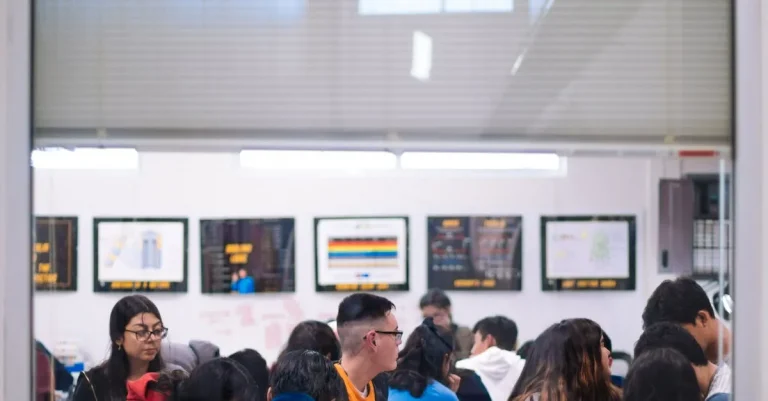
Essential Science Courses To Take In High School
Science plays a pivotal role in high school education. Not only does it teach critical thinking and problem-solving skills, but it lays the foundation for pursuing STEM careers. For students interested in science, choosing the right courses is crucial. If you’re short on time, here’s a quick answer: The main science subjects offered in high…
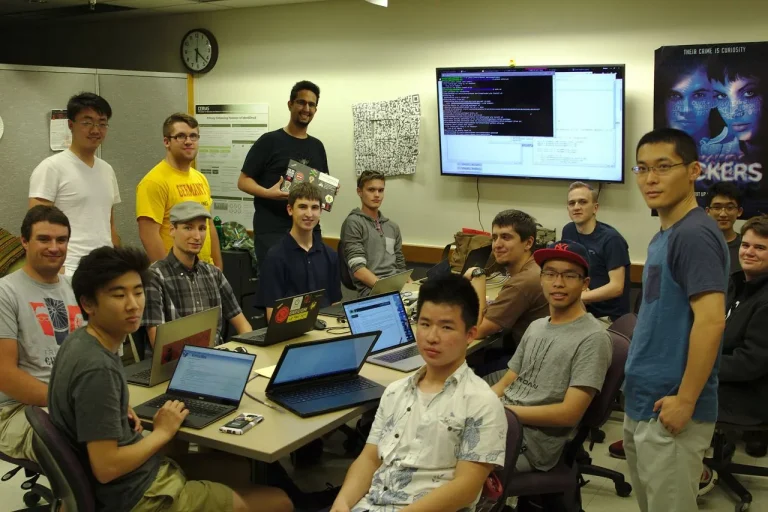
Purdue University Computer Science Acceptance Rate: An In-Depth Look
If you’re looking to study computer science at Purdue University, you’re probably wondering about your chances of getting in. With Purdue’s prestigious engineering program and large research footprint, admission to their computer science major is quite competitive. In this comprehensive guide, we’ll provide an in-depth look at Purdue’s computer science acceptance rates over the past…
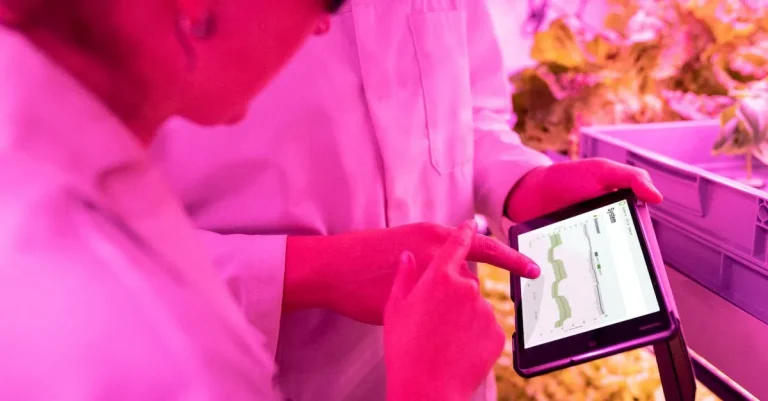
Exponential Growth Definition In Environmental Science
In environmental science, exponential growth describes the rapid increase of a population over time, where the growth rate becomes faster as population size expands. This accelerating pattern can have major ecological impacts. If you’re short on time, here’s a quick exponential growth definition: Exponential growth in environmental science refers to an exponentially increasing growth rate…

Doctor Of Science Vs Phd: What Are The Key Differences?
For those considering an advanced research degree, two options often come to mind – the Doctor of Science (DSc) and the Doctor of Philosophy (PhD). But what exactly is the difference between these two doctoral degrees? In this comprehensive guide, we’ll examine the key distinctions between the DSc and PhD, from program focus and format…

The Origins And Impact Of The Neil Degrasse Tyson Meme
Neil deGrasse Tyson, the famed astrophysicist and science communicator, has become an unlikely internet meme sensation over the past decade. His face and voice have been plastered across image macros, reaction GIFs, and viral video edits, cementing Tyson’s status as one of the most recognizable figures in modern science. But where did this meme-ified version…

What Is A Social Science Perspective?
The social sciences offer a unique lens for examining the world around us. From psychology to anthropology, these fields provide insights into human behavior, relationships, institutions, and more. If you’re looking to better understand society and the forces that shape it, exploring social science perspectives is key. If you’re short on time, here’s a quick…
- International edition
- Australia edition
- Europe edition

How to juggle a full-time job and a part-time PhD
My PhD and my business career are not connected and they are both demanding. But I’ve found there are benefits to my double life
I took a while to tell my colleagues that I was studying for a PhD in my spare time. I was concerned that they might question my ability to balance a full-time (and full-on) career with doctoral studies in a topic completely unrelated to the industry I work in.
But I began to realise that, although the topic I am exploring is not directly connected, the skills I am acquiring are hugely valuable. The process has given me new perspectives and added value in ways I had not expected.
My approach to innovation has evolved, for example, as I apply academic questioning and analysis to business problems. I have completely refined my prioritisation skills. And mentoring graduates and helping them to realise their potential has inspired me to solidify my own thinking about progression.
Studying part-time for a doctorate can be a lonely experience; I have met only a small number of people in the same position. What’s more, there isn’t a huge amount of advice on the topic, so here are lessons I have learned about managing it so far:
Choose a topic that you love
Your choice of subject has to be so appealing that you can keep yourself motivated for the duration of your studies, in the face of the stresses and strains of work. This project may take six years (or more), so it needs a topic that you can’t leave alone. I’ve come to realise that much of a PhD is just getting through it, proving to yourself that you can persist and keep going.
Find the right supervisor and the right programme
Before you begin, it’s important to spend a significant amount of time finding the right supervisor – someone who can appreciate and support your approach. They will need to understand your priorities and your study pattern, which is likely to involve short bursts of activity. Look for someone experienced and who can understand your end goals. You are CEO of your project, so choose your supervisory team well, just as you would do in business.
Set the ground rules
Agree the minimum face-to-face and remote contact required with your supervisor. Document a clear plan of work and activities to reassure people around you – your supervisor and your colleagues – that you are in control.
Take real holidays
Much of the leave I take from work is focused on catching up on studying, but a break away from everything helps to clear the mind and restore the balance between work, study, home, family and friends.
Accept support
Help is there if you look for it and are open to receive it. Once I started being more open about what I was doing, the support I received from my colleagues hugely increased.
Only do what you need to
Accept that you cannot do everything. If your studies are not intended to further your career, you don’t have to give papers, or participate in teaching unless you want to. You need to be clear about the reasons for pursuing your studies. If it is not for a career in academia, then why put yourself under that extra pressure?
Value yourself
Work out how your studies will make you different – value the unique perspective they will enable you to bring to your organisation. Being able to articulate the extra benefits that you bring to your role may be useful if you need leniency around working hours or have to ask for study leave. There are more options than ever before to study remotely or part-time. Pursuing something that you are really interested in can be intensely fulfilling and help you to move towards a rounded and holistic approach to life.
Join the higher education network for more comment, analysis and job opportunities, direct to your inbox. Follow us on Twitter @gdnhighered . And if you have an idea for a story, please read our guidelines and email your pitch to us at [email protected]
- University careers
- Universities
- Higher education
Comments (…)
Most viewed.
25 Best Part Time PhD Programs [2024 Guide]
Explore part time PhD programs. Compare schools and see why you should consider earning your doctorate part time.

If work or other responsibilities have been holding you back from diving headfirst into doctoral studies, consider part time PhD programs instead.
Editorial Listing ShortCode:
You may enroll in an on-campus or online PhD program to earn your doctoral credentials on a schedule that fits your busy lifestyle.
Universities Offering PhD and Other Doctorate Programs Online
Methodology: The following school list is in alphabetical order. To be included, a college or university must be regionally accredited and offer degree programs online or in a hybrid format.
1. Andrews University
Andrews University is a private university in Berrien Springs, Michigan, that is affiliated with the Seventh-day Adventist Church. Founded in 1874, Andrews has a current annual enrollment of 3,366.
Students can pursue 130 undergraduate and 70 graduate majors across eight schools and colleges. Degrees at the bachelor’s, master’s, and doctoral levels are available.
- PhD in Curriculum and Instruction
- PhD in Educational Leadership
- PhD in Higher Education Administration
- PhD in Leadership
Andrews University is accredited by the Higher Learning Commission.
2. Clemson University
Clemson University is a public research university located in Clemson, South Carolina. Founded in 1889, Clemson boasts an annual student enrollment nearing 30,000. U.S. News & World Report ranks Clemson University in 24th place among all public universities.
Students can pursue bachelor’s, master’s, and doctoral degrees across Clemson’s seven schools and colleges.
- PhD in Healthcare Genetics
- PhD in Parks, Recreation and Tourism Management
- PhD in Rhetorics, Communication and Information Design
Clemson University is accredited by the Southern Association of Colleges and Schools Commission on Colleges.
3. George Washington University
Chartered in 1821 by an act of the United States Congress, George Washington University stands today as a private research university with an annual enrollment of more than 27,000. GWU is divided into 14 colleges and schools offering bachelor’s, master’s, and doctoral programs.
The Princeton Review consistently ranks George Washington University as a top college in a number of categories. In addition, GWU has been ranked as one of the Top Universities for Producing Billionaires by the Times Higher Education’s World University Rankings.
- PhD in Nursing
- PhD in Systems Engineering
GW is regionally accredited by the Middle States Commission on Higher Education.
4. Hampton University
Hampton University is a private, historically black university located in Hampton, Virginia, that was founded in 1868. The university is comprised of 10 accredited schools and colleges offering 50 bachelor’s programs, 26 master’s programs, and seven doctoral programs. The Alumni Factor has named Hampton one of the best colleges in Virginia.
- PhD in Business Administration
- PhD in Educational Management
Hampton University is accredited by the Commission on Colleges of the Southern Association of Colleges and Schools.
5. Indiana State University
Indiana State University is a public university located in Terre Haute, Indiana, with a history dating back to 1865. ISU offers more than 100 undergraduate majors and 75 graduate. Students can pursue 20 bachelor’s degrees, 22 master’s degrees, and seven doctoral degrees on campus and online through ISU’s six academic colleges.
- PhD in Educational Administration – Higher Education Leadership
- PhD in Educational Administration – School Administration
- PhD in Technology Management
Indiana State University is accredited by the Higher Learning Commission.
6. Keiser University
Keiser University is a private university based in Fort Lauderdale, Florida. Founded in 1977, Keiser offers bachelor’s, master’s, and doctoral programs available both on campus and online. Money magazine has rated Keiser University one of the top colleges for the money in Florida. Nearly 20,000 students study at Keiser.
- PhD in Criminal Justice and Criminology
- PhD in Industrial and Organizational Psychology
- PhD in Instructional Design and Technology
Keiser University is accredited by the Southern Association of Colleges and Schools Commission on Colleges.
7. Liberty University
Liberty University is a private evangelical Christian university founded in Lynchburg, Virginia, in 1971. The school consists of 17 distinct colleges offering a wide variety of bachelor’s, master’s, and doctoral programs. Programs are divided between 366 on-campus options and 280 online options.
- PhD in Bible Exposition
- PhD in Communication
- PhD in Criminal Justice
- PhD in Criminal Justice – Homeland Security
- PhD in Criminal Justice – Leadership
- PhD in Education – Curriculum and Instruction
- PhD in Education – Instructional Design and Technology
- PhD in Education – Organizational Leadership
- PhD in Education – Special Education
- PhD in Higher Education Administration – Educational Leadership
- PhD in History
- PhD in Nursing – Nursing Education
- PhD in Psychology – Developmental Psychology
- PhD in Psychology – Industrial/Organizational Psychology
- PhD in Psychology – Social Psychology
- PhD in Public Policy
- PhD in Public Policy – Economic Policy
- PhD in Public Policy – Education Policy
- PhD in Public Policy – Foreign Policy
- PhD in Public Policy – National Security
- PhD in Public Policy – Social Policy
- PhD in Strategic Media
- PhD in Theology and Apologetics
Liberty University is accredited by the Southern Association of Colleges and Schools Commission on Colleges.
8. Mississippi State University
Mississippi State University is a public research university located near Starkville, Mississippi, that is classified among RI Doctoral Universities for very high research activity. MSU’s more than 22,000 enrolled students can pursue more than 180 areas of study for bachelor’s, master’s, and doctoral degrees. The school was founded in 1878.
- PhD in Community College Leadership
- PhD in Computational Engineering
- PhD in Electrical and Computer Engineering
- PhD in Engineering – Aerospace Engineering
- PhD in Engineering – Civil Engineering
- PhD in Engineering – Mechanical Engineering
- PhD in Industrial & Systems Engineering
Mississippi State University is accredited by the Southern Association of Colleges and Schools Commission on Colleges.
9. North Carolina A&T State University
North Carolina Agricultural and Technical State University is a public, historically black university located in Greensboro, North Carolina. The school was founded in 1891 by the North Carolina General Assembly. It is ranked among the top historically black colleges and universities (HBCUs) by U.S. News & World Report.
A total of 54 bachelor’s, 29 master’s, and nine doctoral degrees are offered through the school’s eight colleges.
- PhD in Leadership Studies
North Carolina Agricultural and Technical State University is accredited by the Southern Association of Colleges and Schools Commission on Colleges.
10. Texas Tech University
Established in 1923, Texas Tech University is a public research university in Lubbock, Texas, featuring 13 colleges and 60 research centers. The Princeton Review has ranked Texas Tech among the 125 best colleges in the Western United States.
Texas Tech offers 150 options for bachelor’s degrees, 110 options for master’s degrees, and 59 doctoral degree programs.
- PhD in Curriculum and Instructions – Curriculum Studies and Teacher Education
- PhD in Curriculum and Instructions – Language, Diversity & Literacy Studies
- PhD in Curriculum and Instructions – STEM
- PhD in Educational Leadership Policy
- PhD in Family and Consumer Science Education
- PhD in Special Education
Texas Tech University is accredited with the Southern Association of Colleges and Schools Commission on Colleges.
11. University at Buffalo
Founded in 1846, the University at Buffalo a public research university with campuses in Buffalo and Amherst, New York. Nearly 32,000 students are enrolled in what is considered to be the largest public university in New York. UB offers bachelor’s, master’s, and doctoral degrees across 13 academic schools and colleges.
- PhD in Information Science
The University at Buffalo is accredited by the Middle States Commission on Higher Education.
12. University of Alabama – Huntsville
The University of Alabama in Huntsville was founded in 1950. It is one of three members of the University of Alabama System. UAH school awards 44 bachelor’s, 30 master’s and 15 doctoral degrees across nine colleges to a study body of nearly 10,000.
UAH is a space-grant university with a large focus on engineering and science programs.
- PhD in Civil Engineering
- PhD in Engineering Management
- PhD in Industrial Engineering
- PhD in Joint Nursing Science
UAH is accredited by the Southern Association of Colleges and Schools Commission on Colleges.
13. University of Colorado – Denver
A member of the University of Colorado system, the University of Colorado Denver is a public research facility offering hundreds of degree programs for bachelor’s, master’s, and doctoral studies across dozens schools and colleges.
Total annual enrollment stands at 24,910. Forbes places the University of Colorado Denver 34th on the its list of best public colleges.
University of Colorado – Denver is accredited by the Higher Learning Commission.
14. University of Florida
The University of Florida is a public land-grant, sea-grant, and space-grant research university with a main campus in Gainesville, Florida. This senior member of the State University System of Florida offers bachelor’s, master’s, and doctoral programs to the more than 56,000 students that enroll annually.
The list of notable UF alumni includes Erin Andrews, Emmitt Smith, Faye Dunaway, and Marc Rubio.
- PhD in Classical Civilization
- PhD in Latin and Roman Studies
The University of Florida is regionally accredited by the Southern Association of Colleges and Schools.
15. University of Kansas
The University of Kansas is a public research university based in Lawrence, Kansas. Founded in 1865, KU offers more than 345 degree programs for bachelor’s, master’s, and doctoral studies. KU has an annual enrollment of more than 28,400 students.
The school’s faculty and alumni list includes four NASA astronauts, seven Pulitzer Prize winners, 27 Rhodes Scholars, and 325 Fulbright Scholars.
The University of Kansas is accredited by the Higher Learning Commission.
16. University of Missouri
The University of Missouri was founded in 1839 as the flagship of the University of Missouri System. Mizzou currently offers more than 300 bachelor’s, master’s, and doctoral degree programs across 13 major academic divisions for its more than 30,000 enrolled students.
- PhD in Architectural Studies
The University of Missouri is accredited by the Higher Learning Commission.
17. University of North Carolina – Greensboro
The University of North Carolina at Greensboro is a public research university located in Greensboro, North Carolina, that dates back to 1891. This school with an annual enrollment topping 20,000 is part of the University of North Carolina system.
More than 100 bachelor’s, 61 master’s, and 26 doctoral programs are offered at UNCG.
The University of North Carolina at Greensboro is accredited by the Southern Association of Colleges and Schools Commission on Colleges.
18. University of North Dakota
Located in Grand Forks, the University of North Dakota offers 90 bachelor’s majors, 54 master’s programs, and 27 doctoral programs. UND was founded in 1883. Currently, UND has an annual enrollment of 13,581 students spread across its 10 academic divisions. The school’s athletic teams compete in the NCAA’s Division I.
- PhD in Aerospace Sciences
- PhD in Biomedical Engineering
- PhD in Chemical Engineering
- PhD in Electrical Engineering
- PhD in Energy Engineering
- PhD in Environmental Engineering
- PhD in Indigenous Health
- PhD in Petroleum Engineering
The University of North Dakota is accredited by the Higher Learning Commission of the North Central Association of Colleges and Schools.
19. University of South Carolina
The University of South Carolina is a public research university located in Columbia, South Carolina. The more than 35,000 students enrolled at USC today can study toward bachelor’s, master’s, and doctoral degrees from 14 degree-granting colleges and schools. The school’s history dates back to 1801.
- PhD in Computer Engineering
- PhD in Computer Science
- PhD in Mechanical Engineering
- PhD in Nuclear Engineering
University of South Carolina is accredited by the Southern Association of Colleges and Schools Commission on Colleges.
20. University of South Dakota
The University of South Dakota is a public research university in Vermillion, South Dakota, with an enrollment of nearly 10,000 students. The university is divided between seven colleges offering hundreds of bachelor’s, master’s, and doctoral degrees. USD’s campus is home to the National Music Museum. The school was founded in 1862.
- PhD in Health Sciences
USD is accredited by the North Central Association of Colleges and Secondary Schools.
21. University of Southern Mississippi
The University of Southern Mississippi is a public research university with a main campus located in Hattiesburg, Mississippi. Southern Miss awards bachelor’s, master’s, and doctoral degrees across more than 189 programs. Founded in 1910, the school boasts an annual enrollment of more than 14,00 students.
Southern Mississippi’s academic offerings are divided across four colleges and schools.
- PhD in Nursing Leadership
The University of Southern Mississippi is accredited by the Southern Association of Colleges and Schools Commission on Colleges.
22. University of Tennessee – Knoxville
Founded in 1794, the University of Tennessee is a public research university located in Knoxville, Tennessee. UT offers bachelor’s, master’s, and doctoral degrees across 10 undergraduate colleges and eleven graduate colleges. Annual enrollment stands at close to 29,000 students.
Established two years before Tennessee officially became a state, the University of Tennessee is one of the oldest public universities in the country.
- PhD in Industrial and Systems Engineering – Engineering Management
The University of Tennessee – Knoxville is accredited by the Southern Association of Colleges and Schools Commission on Colleges.
23. University of the Cumberlands
The University of the Cumberlands is a private university located in Williamsburg, Kentucky, dating back to 1888. Bachelor’s, master’s, and doctoral programs in a variety of specialties in the arts and sciences are offered across four colleges. Total annual enrollment is 13,476.
University of the Cumberlands is accredited by the Southern Association of Colleges and Schools Commission on Colleges.
24. Virginia Commonwealth University
Virginia Commonwealth University is a public research university located in Richmond, Virginia, with a history dating back to 1838. VCU offers more than 217 programs for bachelor’s, master’s, and doctoral degrees across 11 schools and three colleges.
U.S. News & World Report has classified VCU as a Tier 1 University that ranks in 84th place among all public colleges and universities in the United States.
- PhD in Health Related Sciences
VCU is accredited by the Southern Association of Colleges and Schools Commission on Colleges.
25. West Virginia University
Founded in 1875, West Virginia University is a public research university with a main campus in Morgantown, West Virginia. More than 350 academic programs for bachelor’s, master’s, doctoral, and professional degrees are offered through 14 schools and colleges for the nearly 30,000 students who enroll at WVU annually.
Designated among the R1 Research Universities for very high research activity, WVU boasts research partnerships with the Rockefeller Neurosciences Institute and the Federal Bureau of Investigation.
West Virginia University is accredited by the Higher Learning Commission.
Do Part Time PhD Programs Exist?

Yes, part time PhD programs do exist. Universities know that many people have packed schedules. To accommodate busy students, some schools give the option of part-time enrollment in PhD programs online or on-campus.
The idea is that you may work your way through one of these programs while still living at home and holding a regular job — no uprooting your life required.
Many part-time PhD programs are offered online, which can be particularly convenient. Online college allows you to attend the university of your choice without having to move away from your hometown.
You may take classes online, chat digitally with your academic advisors, and work on your dissertation from the comfort of your own home. Even still, there may be some in-person residencies or practicums required.

Finances are one of the best reasons to enroll in a part-time online program. The paycheck that you bring in each week can help you afford your grad school tuition without living on ramen noodles for five years straight.
Of course, being able to hold a full-time job while going through your doctoral program is more than just a way to make money. Particularly if your field of study is relevant to your job, you may find many opportunities to connect your classroom studies to real-world experiences.
It’s even possible that a situation at work may provide inspiration for the topic of your doctoral dissertation. If you feel that a dissertation may prevent you from finishing your PhD, then a professional doctorate may be a better choice.
For example, doctor of education programs don’t require dissertations in many cases. Instead, students may complete a final capstone project to demonstrate subject mastery.
Part-time students don’t make up the majority of doctoral candidates; even still, you certainly won’t be the only one if you choose to go this route. In the past year, approximately 44% of doctoral students were enrolled in part-time programs .
What Are the Most Popular PhD Programs?
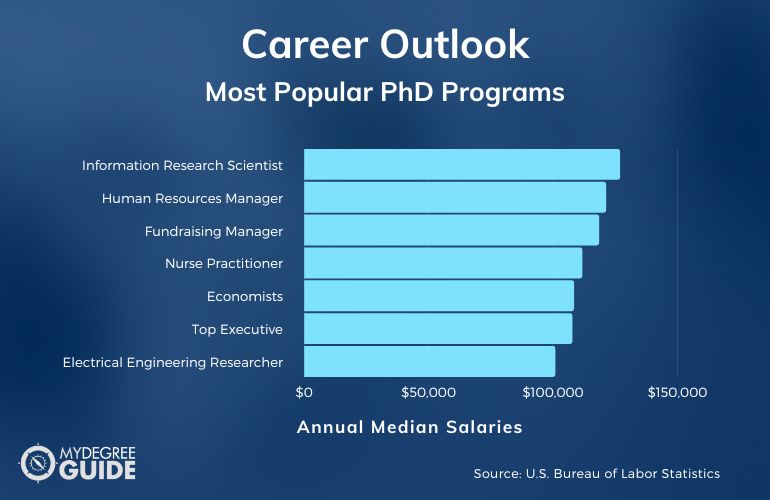
Doctorates are available in practically any field, but some are more common than others. The following table shows some of the top PhDs that you may be able to earn online.
According to the Bureau of Labor Statistics, some related careers and their average salaries include:
Getting your doctorate may certainly increase your earning potential. According to the Bureau of Labor Statistics, the median annual salary for PhDs is $110,200. That’s a large jump from $78,210, the average annual earnings for those with a master’s degree.
How Do Part Time PhD Degree Programs Work?

To graduate from a part-time doctoral program, you’ll need to do the same work that you would for a full-time course of study. You’ll simply spread the work out over a longer stretch of time.
The first portion of your program will likely be devoted to classes. If you’re enrolled on a part-time basis, you’ll probably keep your course load light instead of taking multiple classes at once.
You may be able to take the classes online, but your school may require a few in-person residencies as well.
Some classes will focus on the research methods that are essential for all doctoral candidates to know, such as analyzing data and writing scholarly reports. At this point, you may also start thinking about a topic for your upcoming research project.

Other courses will be related to your field of study. While some classes may be required of every student in your PhD department, others may be electives. That way, you may build a course of study that is tailored to your career goals and research interests.
After completing your classes, your school may require oral or written testing as a way of assessing your knowledge.
Next, you’ll turn your attention toward your dissertation or another final project. This usually requires completing original research and reporting your findings in a detailed paper.
Even for full-time students, it may take several years to complete a dissertation. On a part-time basis, you may be working on this project even longer.
Once you finish your dissertation, the school’s faculty will need to approve it. Then, you’ll answer questions during a defense of your research. If the faculty determines that you have successfully defended your dissertation, you’ll then be awarded your PhD.
How Long Does It Take to Do a PhD Part Time?

How long it takes to complete your PhD through a part-time schedule is largely up to you and how much you can commit to your studies at any point in time.
You may find that there are some seasons in which you’re able to invest a good portion of your time and other seasons when you’re only able to do the bare minimum to keep going.
As a general rule, though, you should expect your part-time studies to last for several years. Being a part-time student won’t exempt you from any of the program’s requirements.
You’ll still need to earn just as many credit hours, complete any residency or internship experiences, and do the same final projects. The work will just be spread out over a longer period of time.

You should probably plan to work on your doctoral program for six to eight years. Some students take even longer. There may be a maximum duration allowed by your program, so be sure to discuss that with your faculty advisor.
Although part-time schooling is convenient, being enrolled in the same program for years on end may start to feel tedious. It’s important to choose an area of study that you really care about.
Your passion for your studies can keep you motivated even when graduation still seems a long way off.
Admission Requirements for a PhD

No matter what type of doctoral program it is, whether it is a part time or an online accelerated doctoral program , they can be competitive and you’ll want to make sure that your application stands out to the admissions committee. The first step is making sure that you meet the requirements and include all necessary documentation.
- Application and fee: Filling out this form gives the committee basic information about you, so be sure to complete it thoroughly. The fee will be non-refundable, even if you aren’t admitted.
- College transcripts: These demonstrate whether you have the appropriate academic background. You will need to hold a bachelor’s degree, and you may need a master’s degree as well. There may be minimum GPA scores required.
- Test scores: Many schools use GRE or GMAT scores to determine whether you have what it takes to succeed in a PhD program. If you’re an international applicant, you may also need TOEFL scores to demonstrate your proficiency with the English language.
- Letters of reference: These should come from academic or professional colleagues who can attest to your commitment and character. Two or three letters may be required.
- Personal statement or research proposal: This is your chance to communicate your study goals. That way, the school can determine whether your interests align with the expertise of the faculty.
Pay close attention to application deadlines. It’s smart to submit your materials a few weeks before the cutoff since schools don’t usually take late applications.

Accreditation for PhD Programs
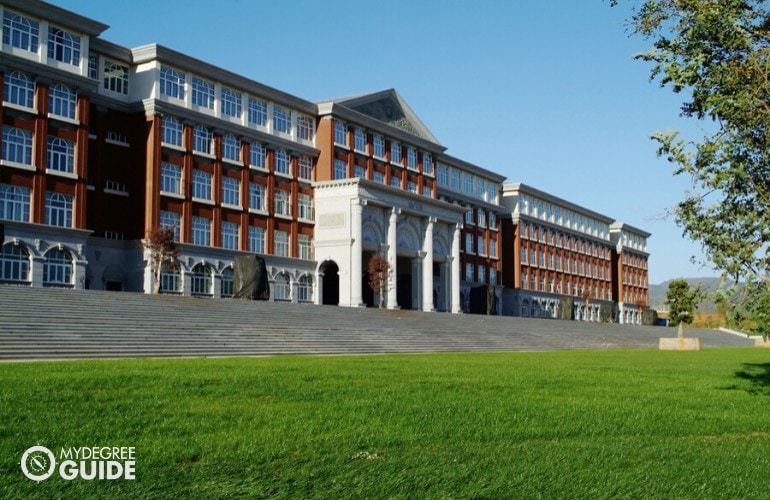
Accreditation is a process in which an independent organization evaluates a college’s programs and results to determine whether the school is doing a good job of educating students. If the college is up to par, then it receives approval from an accrediting body.
The primary type of accreditation to consider is regional accreditation . There are seven U.S. organizations that have the right to grant regional accreditation.
There are fairly high standards for regional accreditation. As a result, this type of accreditation is well-respected, and employers are often more inclined to select candidates whose degrees come from regionally accredited schools.
Financial Aid for PhD Students

Paying for a doctorate out of pocket can be an overwhelming prospect, but there are a number of options for funding your PhD.
- Fellowships: Based on your personal merits, your school or a private organization may give you fellowship money intended to further your research goals.
- Government grants: If your income qualifies, you may get free tuition help from the state or federal government.
- Government loans: You may have the option to take out low-interest loans from the federal government or your state.
- Private loans: To supplement your financial package, you may also need private loans. Just be aware that these can come with high interest rates.
- Scholarships: You can apply for gift money from a scholarship-granting organization, such as a professional association in your field.
- Stipends: Some schools grant PhD candidates a small stipend. There are usually stipulations to this, and the rules may differ for part-time students.
To find out more, talk to your school’s financial aid department. Be sure to fill out the Free Application for Federal Student Aid (FAFSA) .
Also, if getting a doctorate could benefit your performance at work, you may be able to request tuition assistance from your employer.
Can You Do PhD Part Time?

Yes, you can do a PhD part time. Studying for a PhD doesn’t have to be all-or-nothing. Just as there are part time masters programs , you can likewise enroll in a doctoral program on a part-time basis.
With that approach, you may be able to go to work during the day and take classes or write papers in the evening. It may even be possible to complete the coursework online.
Is PhD Full Time or Part Time?
Both full-time and part-time PhD programs are available. Some people choose to earn their doctorates as quickly as possible by going to school full-time. Others opt to enroll part-time so that they may keep up with work or family responsibilities.
Keep in mind that not all schools give you the choice between full-time and part-time study; their traditional or online doctoral programs may be specifically designed for one or the other.
Is a PhD Worth It?

Yes, a PhD is worth it for many students. The U.S. Bureau of Labor Statistics projected a 5.9% job growth for doctoral or professional degree holders over the next 1o years, faster than the average for all occupations.
Getting a PhD may open new doors. Earning this top degree may grant you entrance into academia as a researcher or a professor.
It may also prepare you to assume high leadership roles and earn more money in your field. Plus, there’s often a sense of personal satisfaction that comes from accomplishing a huge goal like earning a PhD.
If you’re ready to put those three letters after your name, then it’s time to think about enrolling in a doctoral program. Apply to part-time PhD programs so you may pursue your degree without putting your life on hold.


The best PhD student part-time jobs [Full guide]
Having a part-time job as a PhD student can be a way to earn more money and live more comfortably but, it also has a downside. It can also be a huge distraction and stop you from focusing on your primary goal which should be working towards your PhD.
The good news is that there are job options that allow you to build valuable skills for the future and not get distracted. My favourite jobs, during my PhD, were teaching in laboratories and tutoring.
The best PhD student part-time jobs include university-based jobs such as tutoring, marking exams, running workshops or laboratories, and working in student services. You can also do online part-time jobs such as user testing to earn a small amount of extra income per month.
Having a part-time job as a PhD student is essential if you are a self-funded PhD student. Without the extra income, you will be relying on savings and eating away the money in your bank account.
This article will cover everything you need to know about the best PhD student part-time jobs and provide you with some options that may suit your current availability and interests.
Can I have a side job as a PhD student?
In all the universities that I have worked at, there has never been any issue with PhD students having a part-time job as long as it did not interfere with their research and it was approved by their supervisor.
PhD students are able to get a stipend which will support their basic living costs throughout their PhD. For example, I was supplied with AU$20,000 per year as a PhD stipend in Australia .
This amount provided me with enough money to afford a reasonable rent in a share house and run a very old and tired car. Nonetheless, I often had plenty of money for entertaining myself with my friends. There wasn’t a lot of money saved but it meant that I didn’t have too worried about the basics (food, accommodation, travel, et cetera).
Some PhD students find that their stipend is not enough for their desired lifestyle and, therefore decide to get a part-time job.
But should you get a part-time job during your PhD?
Should you have a job during a PhD?
Even though there are no explicit rules in many universities for students having part-time jobs it can be a huge distraction.
A PhD takes up a lot of brainpower and time. Trying to balance the demands of a part-time job may be too much for many PhD students.
In general, I would recommend that a PhD student does not have a part-time job in at least the first year of their studies.
Ensuring that your mind is fully on the research will help you start strong – the work performed in the early years are the most important for a timely finish.
You should definitely get a part-time job during your PhD if you are under financial stress. Worrying about where the next meal will come from will do nothing but distract you from the research. Going down to a part-time PhD is also an option if you are struggling financially.
Do what is best for you and the general rule of thumb is to dedicate as much time as possible to your PhD whilst also balancing other aspects of in adult life such as obtaining money for a basic lifestyle.
If you do decide to get a job during your PhD here are some of the best options for balancing with your research.
Best PhD student part time jobs
The best PhD student part-time jobs will have flexible hours, provide you with a reasonable hourly rate, and not distract you from your primary goal of completing your PhD.
I have highlighted in my YouTube video, below, all of the different side hustles that PhD students can try if they need to earn a little bit more money.
There are, of course, many more options than I was able to highlight in my YouTube video.
Typical common part-time jobs in hospitality and customer service are a great place to start if you need to start work quickly.
Common part-time jobs
Even though it can sometimes feel like a bit of a backward step in your life, getting a job in hospitality or customer service can be the perfect balance for your PhD schedule.
Think of areas of employment that employ undergraduate students. These employers are often understanding of student timetables and are often more flexible with your rostering.
Hospitality
Working in a bar, restaurant, café, or other hospitality area can be a fantastic way to earn money as a PhD student in a part-time job.
The benefits include working outside of 9-to-5 and being relatively flexible with working hours.
Unfortunately, hospitality can be very physically demanding. Standing up all day, serving customers, and delivering food can take its toll. Ensure that you are able to balance this role and rest appropriately to allow your mind to be on tiptop form when you are doing research.
Customer service
Customer service is another awesome job that often employs university students.
Working in a store on weekends may be the best way to balance your PhD and your work.
In high school, I worked in a department store and I was also able to earn commission on top of my regular base salary. I sold suits.
Looking for customer service/sales roles that have an extra commission on top of the base salary may be a good way to maximise your earning potential in a part-time job.
University-based jobs
One of my favourite areas to work as a PhD student was within the university itself.
Having a part-time job in a university means that you don’t have to travel very far. It is also very easy to fit in around your other research responsibilities.
There are a number of university-based jobs including tutoring, marking exams, working in student services, and more.

One of my favourite ways of making money as a PhD student was fired tutoring.
If you enjoy working with students tutoring may be one of the most lucrative things for you to do with your time.
I used to offer students “cram sessions”.
Towards the end of a teaching semester I would offer chemistry students the ability to go through past exams with me. I would break down all of the common questions in the past exams and the best way to answer them.
This was valuable for the student as it focused their attention towards passing an exam. I was able to earn a lot of money in two weeks because of the demand for extra tutoring.
Simply placing in advertisement on a high traffic student area is all the marketing you need to do. Alternatively, you can place ads online in the appropriate forums and Facebook groups et cetera.
Marking Exams
Marking exams is something that senior PhD students can consider.
I used to mark lecturers’ exams because they did not have the time to do it themselves.
I approached several lecturers and asked whether or not they would be interested in outsourcing their marking. I was provided with an ideal answer marking sheet to mark up to 300 papers.
Once I got into the swing of things and memorise the answers it was very easy to go through the exams and pick out the areas in which the marks are awarded.
Workshops/laboratories
In the chemistry area, undergraduate students have two do laboratory assignments.
It was very common for PhD students to sign up for demonstrating in the labs.
The job would involve attending a lab, demonstrating the activities, supervising the students and answering questions, and marking their lab books.
Even though the role was performed throughout the day it only happened a couple times a week and was easy to fit into a typical PhD workload.
I also ran the chemistry tutorials.
These were where students asked questions about the lecture material and we went over many examples so that they were able to fully understand the, sometimes very complicated, material.
If something like this interests you, reach out to
Student services
Other PhD students in my cohort often signed up for contract roles with the student services office.
They would help undergraduate students with activities like:
- literature review writing
- article writing
- finding and citing sources
- and other academic activities
Often these services were for international students struggling with academic English.
Have a look to see if your university offers the services and how you can get involved.
Best online jobs for PhD students
In the modern world, it is possible to earn money online. It isn’t necessarily the easiest way of earning money and it can be very difficult and time-consuming to earn money online.
Nonetheless, there are some options for you if you need to be location independent and have a desire to earn your money online.
The great thing is that you only need a laptop and a stable Wi-Fi or Internet connection to earn money.
Here are some of my best ways of earning money.
User testing
User testing is when you provide feedback to developers and website owners on the usability of their website or app.
I did this for a while and it earned me anywhere between US$200 and US$300 a month. Not a lot but enough for a little bit of a top up of your scholarship.
The onboarding process was relatively simple and you have to submit an example of your work. Speaking aloud clearly, and following the brief allows you to get the highest reviews back from your clients and ensures that you are recommended for more tests.
Check out a service like usertesting.com .
If you can read and write in a foreign language fluently and understand the basics of translation you can make a good money as a freelance translator.
This is brilliant for international students who are doing their PhD in a second language and it can make you up to $29 per hour . Your pay will vary based on your experience and the complexity of the project you work on.
An interesting way of making money as a PhD student is to become a notetaker for a service like studysoup.com
You will be able to earn a lot of money whilst helping struggling college students with their notetaking in difficult classes.
If you are someone who loves organisation and learning this may be the perfect opportunity for you to earn some money alongside your PhD.
It could be a little bit time-consuming but will also help you revisit the basics and foundations of your field. Something that is quite valuable for PhD students who are getting lost in the specifics of their research.
Search engine evaluator
Search engine performance evaluation can be relatively lucrative for PhD students but it can be lonely and demand a lot of your time.
You will be evaluating whether a search result is timely, relevant, and accurate to their search intent.
You’ll be providing a human perspective on the results to help inform their algorithms.
It has excellent flexible working hours and often employs new evaluators.
However, the workflow can be very irregular, just like most online ways of earning money, and may involve training periods and non-compete agreements.
If you’re interested in other ways to earn money check out this YouTube video, below.
Best freelance jobs for PhD students
Getting a freelance job can be relatively difficult. Unfortunately, building up your reputation as a reliable and capable freelancer is a full-time job on its own.
However, if you have got a particular skill that is highly valued you can earn good money.
Freelance jobs for PhD students include:
- translation
- video editing
- graphic design
- search engine optimisation
- website development
- and many other skills
You can use services like Upwork to find clients but these services are often a “race to the bottom” for pricing. You may not get what you deserve and you may be better off finding clients through your own networks and connections initially.
Choosing the best PhD student part-time jobs
If you decide to take up a part-time job as a PhD student is important that you follow some simple rules to ensure that it does not take over your life.
Balancing the time commitments required for a PhD student with a part-time job is difficult but certainly not impossible.
Good communication with your employer, supervisor, and direct manager will ensure that you are able to balance everyone’s expectations.
Here is everything you need to do to make sure that you choose the best PhD student part-time job.
Time commitment
Part-time jobs can become a massive time sink.
Ensure that you write out your schedule and dedicate as much time as humanly possible to your PhD studies.
Look for a job that has the smallest amount of time commitment for the largest amount of hourly pay so that you can be as efficient as possible earning money.
Skill building
The one reason I loved getting a part-time job in my university was that it allowed me to build up skills that helped me later in academia.
Learning to teach, explain, and help students certainly look good on my CV and it was something I enjoyed. It led to me lecturing as a postdoc and allowed me to build up evidence of quality teaching.
Try to find a part-time PhD student job that allows you to build skills that you enjoy. For me, that was teaching, lecturing, and interacting with students.
No matter what you decide to do, make sure that everyone is on the same page.
You need to be explicit with each person involved. Whether that is your research supervisor, your boss, manager, or family, you need to make sure that everyone knows what you are able to do and the time that you can dedicate to each activity.
People can get confused about your motivations and asked too much of you as a PhD student.
Remember to write down your agreements and have everyone sign off on what you are committing to. Jobs can easily take over a lot of your life if you allow them to.
Wrapping up
This article has been through everything you need to know about the best PhD student part-time jobs and all of the options available to you.
I have shared my experience during my PhD and found that a university-based part-time job was the best way to balance the time commitments of both a job and my research.
I also really liked lecturing and, therefore, built up skills which enabled me to bolster my CV and position myself later in my academic career.
No matter what you end up doing, make sure that everyone understands the commitments you are able to provide to each role and that you are explicit with your supervisor and your boss.
Earning a little bit of extra money throughout your PhD will help you stay away from financial anxiety and provide a little bit of extra spending money on top of your PhD stipend.

Dr Andrew Stapleton has a Masters and PhD in Chemistry from the UK and Australia. He has many years of research experience and has worked as a Postdoctoral Fellow and Associate at a number of Universities. Although having secured funding for his own research, he left academia to help others with his YouTube channel all about the inner workings of academia and how to make it work for you.
Thank you for visiting Academia Insider.
We are here to help you navigate Academia as painlessly as possible. We are supported by our readers and by visiting you are helping us earn a small amount through ads and affiliate revenue - Thank you!

2024 © Academia Insider

The secret life of part-time PhD students
- No Comments
In this post Yasmin and Molly discuss their experiences of doing a part-time PhD. They talk about what this includes as well as giving some of their top tips for those considering going down this route.

Who we are:
Yasmin: I am a Research Assistant running the Children of TEDS ( CoTEDS ) project . I manage study design, participant recruitment, data collection and data management. I also supervise undergraduate placement students who help a lot with these jobs. This has given me time over the past four years to also complete a part-time PhD. My thesis is focussed on understanding associations between parent and offspring anxiety and depression.
Molly: I am also a Research Assistant, running the Genetic Links to Anxiety and Depression (GLAD) Study, with similar responsibilities to Yasmin. I work with a team of other staff members and placement students to ensure that the study is running smoothly and implement any changes in study design or recruitment strategy. I have one day a week set aside to work on my PhD and switch over to writing and working with the GLAD data. My research is investigating phenotyping methods for anxiety and depression and the symptom presentation of these disorders.
How does a part-time PhD work?
In the UK, part-time students typically have at least six years to complete their PhD. It is possible to do it in less time if you have the right support. The minimum time allowance for part-time students at King’s is 4 years.
You may have set days of the week to do your research, or you may have to slot it in throughout the week alongside other jobs. Whichever way you do it, you must be disciplined in carving out time to focus on each job. You need supportive supervisors and line managers who understand your workload.
Multitasking comes with the territory as a part-time PhD student, and you continuously have to plan ahead. By the end, if all else fails, you can compete for a place in the Guinness World Book of Records for highest number of weekly schedules and to-do lists ever written (see photo for a typical desk scene).
Three advantages that we have enjoyed as part-time students*:
*Disclaimer – we both have Research Assistant jobs alongside our PhDs, so our experiences are specific to this. There are lots of other reasons why you might do a PhD part-time, for example if you are raising a family or have other commitments outside of academia
1. Getting experience with a wide range of tasks
Part-time PhD students may also be working, either full- or part-time. This gives you the opportunity to get hands-on experience with a wider variety of tasks and projects, and it can be a welcome distraction from PhD work.
2. Employability
Following on from advantage 1, your experience is a great CV booster. You will develop a broad range of skills and experience. If you’re an RA and PhD student, then you’ll have experience working closely with both research teams and academics at all stages of research. This is not only a bonus for your job applications, but can also give you more opportunities to network and build relationships with other academics that can help you with your career long term.
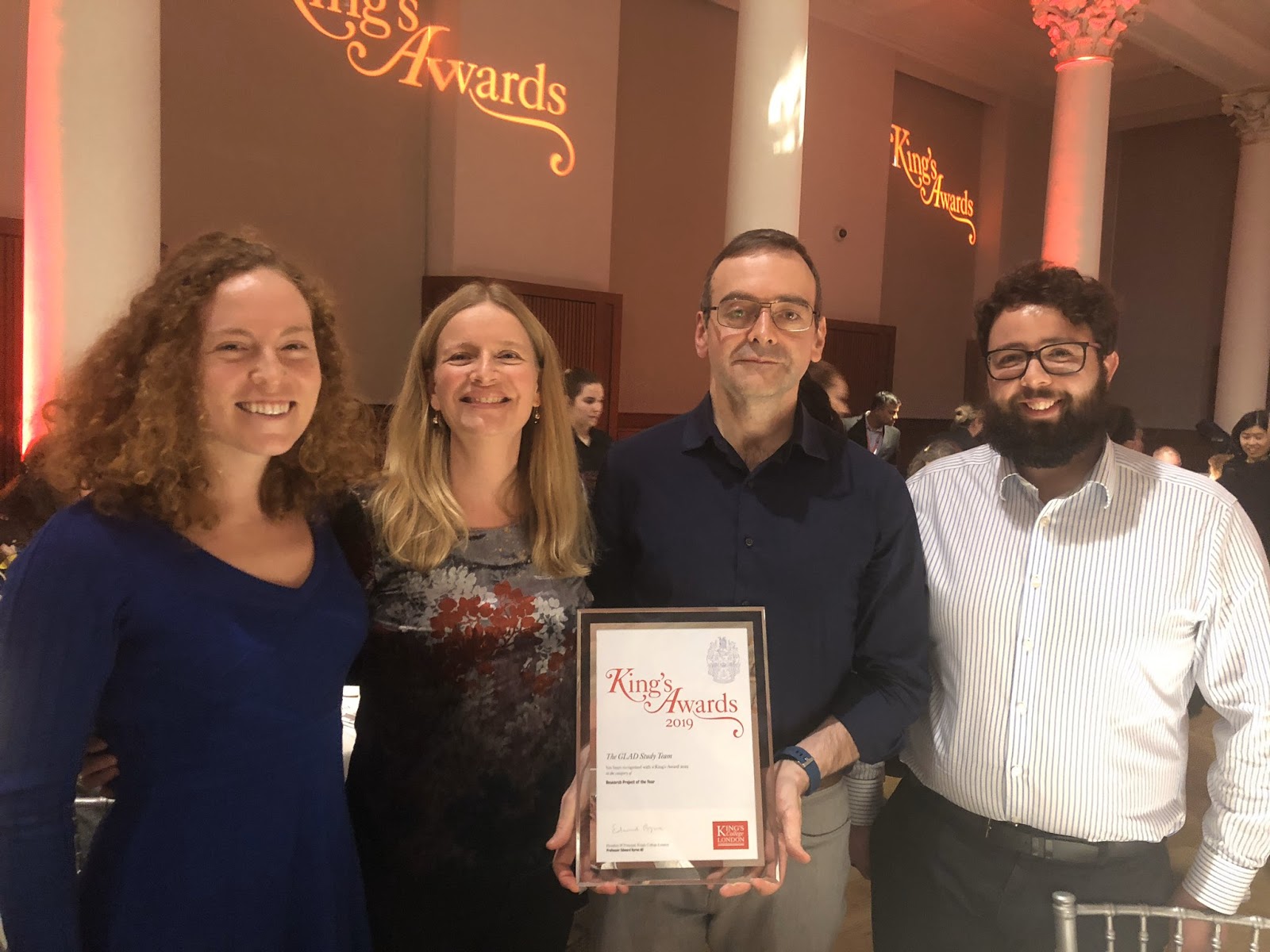
3. Financial stability
It’s no secret that a PhD stipend can be difficult to live on, particularly in London. It’s not all about the money, but having a salary helps negate some of the financial stress (and general stress, when it funds a nice holiday!).
“You will develop a broad range of skills and experience.”
Three challenges that we have faced as part-time students:
1. Time management
It can be difficult having so many jobs competing for your attention during a time of intense training and learning. Opportunities to procrastinate are vast, as you can always switch to a different job when one gets too difficult. It can be hard to save days each week to just do one job, but changing location can help to switch focus (Molly works from home on Fridays to create separation; working in the library can help as well). Set short and long-term goals to keep track of tasks and make sure that your PhD work progresses. Agree deadlines with your supervisor to create accountability for yourself. Remember that research is unpredictable and projects usually take longer than expected!
2. Self-motivation
This applies to all PhD students, but can be exacerbated with part-time PhD work. You may work more independently from other students (physically in terms of your desk, and temporally in terms of your timeframe). We have enjoyed having colleagues who aren’t PhD students, to provide a welcome break and change of perspective and pace! It is important to go to talks and events that inspire you and remind you of all the reasons why you chose to do both your job and PhD in the first place.
3. Not being able to do everything
As part-time students we can’t always do the things that full-time PhD students fill their time with, such as teaching, conference planning, research placements and reviewing papers. We sometimes miss events, training and seminars during working hours and don’t always have funding for courses or travel.
“It is important to go to talks and events that inspire you.”
Top tips for anyone starting a part-time PhD
1. Find ways to attend conferences, courses and training
Make sure you identify the key training needs that you require and keep an eye out for funding opportunities if you need them. This could be by identifying travel awards or funding pots, or negotiating with your supervisors for support. Keep in mind that conferences can be as important as training, as they allow you to network and get inspired by/learn from other researchers in your field. Also keep an eye out for events, training, career services, etc that are offered by your university and take advantage (lots of them are free, like these for King’s College London students).
2. Don’t compare your research output to other students
Every PhD is different and everyone is gaining their own unique set of skills and experiences. Keep in mind that your PhD is only the start of your career, not the end. If you want to learn a new skill but don’t have time during your PhD, then you can set that as a goal during a post-doc position or the next stage in your career.
3. Remember that you’re a student too, and look for what support is available to you
Ask for help. You may be able to work it out by yourself, but it can be faster to speak to someone else, even just to ask for advice on papers to read or resources to access. Building relationships with other PhD students or early career researchers is particularly helpful to build a support network and share knowledge of techniques or ideas. If you aren’t sure where to start, your supervisors can also help by introducing you to their other students.

Previous Post Genetic prediction of educational attainment: the important role of parental behaviour
Next post staying healthy during covid-19.
Author Yasmin Ahmadzadeh
Comments are closed.
Careers within research
Work-life balance
Working from home
Book & show reviews
Mental health & wellbeing
Genetics & mental health
- Anti-racism
- Learning From Doing
- Life Scientific
- Mythbusters
- Research Matters
- The Wider World
- Authors & contributors
Follow this blog
Social media.
© 2024 The EDIT Blog.
Recent Posts
- First International Conference
- PhD applications
- Visiting another lab as a PhD student: part 2
- Giving a longer talk
- Y for Youth Awards
Recent Comments
- A call for diversity in genetics research: Part 2 – The EDIT Blog on A call for diversity in genetics research: Part 1
- Reflecting on resilience: Part 2 – The EDIT Blog on Reflecting on resilience: Part 1
- Collaboration between academic and voluntary organisations: Part 2 – The EDIT Blog on Collaboration between academic and voluntary organisations: Part 1
- Zain-Ul-Abideen Ahmad on Self-Report Measures and the Replication Crisis
- Post Of The Week – Saturday 30th January, 2021 | DHSB/DHSG Psychology Research Digest on Measuring race, ethnicity and ancestry in research: time for new tools
Masters Compare - Find your perfect masters course.

- Living as a Postgraduate student
Working and studying for a PhD at the same time
Share this article.
- Facebook Sharer
- Twitter Sharer
- LinkedIn Sharer

Explore other topics
- Funding a Postgraduate course
- Popular masters degree subjects
- Student Wellbeing
- Studying a Postgraduate degree
- Finding a PhD or Masters Course
Think Postgrad
Frequently asked questions.
In short, yes, you can work while studying for your PhD.
The hard part to juggle is finding the time to do both. You may find that part-time study is more flexible for you but it takes longer to complete. An excellent way to combine work and study is to get a job within the university you are studying at.
Check out other sources of support for PhD Students .
There are several benefits to both full time and part time PhD study. It can be extremely difficult to juggle a full time postgraduate position alongside working. It’s not called full-time for nothing! This is intensive but you can complete a full time PhD faster than it’s part-time equivalent.
Studying for a PhD is a big commitment, either full time for 3-4 years or part-time for generally 6-7 years. If you want, or need, to be working and studying for PhD this could have an impact on your study: here are some of the things you may find it helpful to think about before starting your PhD.
Is funding for a PhD in the UK enough to live on?
If you are fortunate enough to have full funding for your PhD, your studentship should cover both fees and living expenses and be tax-free. The stipend levels for students studying for a PhD in the UK is set by UK research councils for their own studentships, and this is followed by Universities for their own studentships. These will provide enough to live on and not to have to be working and studying for a PhD.
If you are looking for PhD Funding, you can search for your ideal studentship from the many opportunities we have listed on Postgraduate Studentships. We have a section for Charities and Trusts who are set up to support students looking to get additional financial help with their studies.
How much work is included in a Graduate Teaching Assistantship?
Some PhD studentships are called Graduate Teaching Assistantships – this means that you will be teaching for a certain number of hours in each academic year and this is part of the conditions of the studentship. It is advisable to find out exactly how this works with the University advertising the opportunity. Will you receive separate payments or is this part of the studentship? How many hours will it involve and how will that relate to your PhD? Will you receive training?
If you are considering an academic career, there may be some advantage in getting some initial experience. However you may also struggle with working and studying for a PhD at the same time.
Should I study my PhD full-time or part-time if I need to work?
If you need to work and study, it’s important to think about how you will manage that. Can you study full-time and work at the same time and if so how much work can you do? A full-time PhD is regarded as a full-time commitment. So anything other than a supplementary job for a few hours per week is challenging. Some students start with a full-time PhD and then move to studying the PhD part-time. So you would need to discuss this with your university first.
Planning to study a part-time PhD takes longer overall but it may also give you the time to do your PhD and to make the money you need. If you do decide to study part-time you may already have a job that will allow you to have flexible hours. Think also about part time work in a field that relates to your study. If you need to look for a job that will help you do your PhD, your University is likely to have temporary or part-time jobs that students can apply for on campus – most universities have a database of these jobs for students so you can find out in advance what the pay rates are and if that would be enough.
Universities also have a range of part-time jobs which may be administrative or involve working in labs. If you apply for one of these jobs, especially in your own department, it’s important to make sure you work out how you will manage this. This way, you're prepared for when you are working on your PhD and when you are working on your job.
What if I am an International Student?
If you are an international student in the UK there will be restrictions on how many hours you can work. The UK Government has made some improvements to this. There are more opportunities now to study and work in the UK .
Talking to your University about your options
Your university wants you to succeed at your PhD. It has experienced students working whilst studying and works and what doesn’t. If you are planning to work whilst studying it’s a good idea to talk to your department. These questions may form part of your application process because your Supervisor will want to make sure you have the means to conduct your research as well as support yourself.
Many students study for a PhD and work for at least part of the time and complete their PhD successfully. If you look at the options beforehand, you can plan what works best for you. This way you can get the most from your PhD whilst working at the same time.
Looking for PhD Funding? There are a wide range of study funding opportunities for intending PhD students on PostgraduateStudentships
Receive Email Updates of the latest PhD and Masters opportunities and funding from PostgraduateStudentships and MastersCompare .
- Advertisers
- Cookie Policy
- Terms and Conditions
Sorry! You need to sign up
Sign up to Postgraduate Studentships
Sign up to compare masters
Opportunity added!
Thanks for making your selection. Click below to view your list.
Course Added
Thanks for making your selection. Click below to view your comparisons.

Think Postgrad Ltd 2008-2024 Website By Parachute

25,000+ students realised their study abroad dream with us. Take the first step today
Here’s your new year gift, one app for all your, study abroad needs, start your journey, track your progress, grow with the community and so much more.

Verification Code
An OTP has been sent to your registered mobile no. Please verify

Thanks for your comment !
Our team will review it before it's shown to our readers.

Studying for a Part-time PhD: The Challenges and Benefits
- Updated on
- Dec 2, 2022

Are you a Masters student or a researcher who is considering doing a PhD? If so, you would know that pursuing a doctoral program is a long-haul commitment for any student. The duration may vary by subject. A PhD in a STEM subject may take three years. On the other hand, if a PhD topic requires data collection over an extended period of time, the process can take longer.
In the Social Sciences fieldwork for qualitative data collection can take 2-3 years and so the PhD can take 5 years or a bit longer. The duration of the PhD program also varies by region. A PhD in the United States may require year-long coursework (to study and pass examinations in some specified courses). Your focused dissertation work can begin only after you pass those examinations. This is how a typical PhD program runs.
This Blog Includes:
What does a part-time phd mean, what are the benefits of doing a part-time phd, challenges faced in pursuing a part-time phd, career advice from a phd mentor.
A part-time PhD is basically about flexibility. This means that :
- The rules about timelines for submission do not apply to you.
- Time for completion may be open-ended, sometimes as long as 8 years.
- The fees may be lower than for the full-time programme.
- Your presence may not be required.
- You may be able to work remotely –in case you have a job or family responsibilities in a different city.
Many universities, regardless of the subject that you are pursuing, will offer you the option of doing a part-time PhD spread over a few years. However, if you are on a funded scholarship , or have a research fellowship or other sources of funding, this may not be permissible. You may be required to complete your dissertation within a stipulated period of time.
Must Read: Importance of publications during PhD
- If you are a young professional and holding a job, a part-time PhD would be a good option because it would give you flexibility without disrupting your professional work.
- A part-time PhD would enable a student to take up research projects and teaching assistantships alongside the study. This ensures additional income while you do your doctoral work.
- If you have family responsibilities and are not able to focus full-time on your research, then a part-time PhD offers potential.
- In case of financial constraints, the part-time PhD student will have to pay a lower fee annually, although it would extend for more years.
- Research has shown that when students take extended periods of time to finish their dissertations, many ‘drop out and do not complete their final dissertations .
- Working on the same topic for 6-8 years can result in losing focus and motivation which ends up in non-completion.
- Non-submission of the final dissertation means that the student is given the title ‘ABD’ (all but dissertation). Professionally this means that although you may have completed all other requirements, you will still be ABD and not get the title of a PhD The PhD is a key qualification required for academic and research-related positions.
- This is the reason why university fellowships have a time limit within which a student must complete and submit their dissertation and fulfil all other requirements for a PhD.
Also Read: Top Challenges Faced While Studying Abroad and How to Overcome Them
I have mentored many graduate students and PhD scholars during the years that I have taught at universities in India and in the United States. They have all confirmed that doing a PhD is hard work and needs a strong focus. My own personal journey in doing a PhD also confirmed that. I had to keep track of my own progress and create my own deadlines and targets so that every few months I could reach the next stage towards completion. In such a situation a part-time PhD did seem an attractive option. However, I chose a full-time programme to keep myself motivated and to get my degree as early as possible.
My advice is to all PhD scholars is to set a target to complete the PhD during the time permitted for a full-time PhD Choose the part-time option only if you have serious time constraints or other responsibilities or if you need to live in a different city from your university. In that case, set goals and milestones for yourself so that you don’t lose focus or motivation. For more questions on research skills, finding a topic for research or choosing a methodology, DM me!
We will be back next Friday with another amazing blog from Dr Maina Chawla Singh. Till then, if you have any questions or suggestions, just drop us a comment and we will get back to you.
Dr. Maina Chawla Singh
A scholar, internationally published author and Higher-education consultant, Maina Chawla Singh (PhD) has over 25 years of teaching experience at universities in India, United States and Israel. She has authored two academic books and several peer-reviewed journal articles. Her research spans multiple disciplines across Liberal Arts : Gender Studies, Colonialism, History of Medicine, Migration, Identity Studies, Indian Diaspora, Jewish Anthropology and Israel Studies. Dr Singh has been an invited speaker at prestigious institutions including at Yale, Cornell, Oxford, Georgetown, University of Penn, Emory University, Ann Arbor, Michigan, NYU, Tel Aviv University (Israel) and Sciences Po (France). Having taught online university courses at American University since 2013, Dr Singh is highly skilled in Digital Pedagogies, Syllabus Design and Online teaching. She has been a peer-reviewer for several international journals and is certified in academic manuscript editing (New York university, USA). Dr Singh has lived in Russia, Israel, Japan, Ethiopia, France and the USA and has a deep comparative understanding of International Education. She is passionate about supporting student aspirations for Study Abroad. Dr Singh is an Academic Content Creator. As a freelance mentor Dr Singh offers customized career-advice to students, early- career professionals and researchers for Personal Brand-building ; Persuasive Communication, Academic Profile-building and Research Publication. Dr Singh speaks Hindi, English, Punjabi and Russian. She loves reading about Tech, Digital Marketing and Design-Thinking.
Leave a Reply Cancel reply
Save my name, email, and website in this browser for the next time I comment.
Contact no. *

Leaving already?
8 Universities with higher ROI than IITs and IIMs
Grab this one-time opportunity to download this ebook
Connect With Us
25,000+ students realised their study abroad dream with us. take the first step today..

Resend OTP in

Need help with?
Study abroad.
UK, Canada, US & More
IELTS, GRE, GMAT & More
Scholarship, Loans & Forex
Country Preference
New Zealand
Which English test are you planning to take?
Which academic test are you planning to take.
Not Sure yet
When are you planning to take the exam?
Already booked my exam slot
Within 2 Months
Want to learn about the test
Which Degree do you wish to pursue?
When do you want to start studying abroad.
September 2024
January 2025
What is your budget to study abroad?

How would you describe this article ?
Please rate this article
We would like to hear more.
Thank you for visiting nature.com. You are using a browser version with limited support for CSS. To obtain the best experience, we recommend you use a more up to date browser (or turn off compatibility mode in Internet Explorer). In the meantime, to ensure continued support, we are displaying the site without styles and JavaScript.
- View all journals
- Explore content
- About the journal
- Publish with us
- Sign up for alerts
- CAREER COLUMN
- 08 April 2024
How we landed job interviews for professorships straight out of our PhD programmes
- Violeta Rodriguez 0 &
- Qimin Liu 1
Violeta Rodriguez is an assistant professor in the Department of Psychology at the University of Illinois Urbana-Champaign.
You can also search for this author in PubMed Google Scholar
Qimin Liu is an assistant professor in the Department of Psychological and Brain Sciences at Boston University in Massachusetts.

By staying organized in their job hunt, both authors received several job offers. Credit: Getty
We met during the last year of our PhD training, after securing placements at the University of Illinois Chicago’s Department of Psychiatry for our predoctoral internships — the final step of our clinical doctoral programmes. V. R. came from the University of Georgia in Athens and was pursuing a PhD in clinical psychology, and Q. L. came from Vanderbilt University in Nashville, Tennessee, and was working towards a PhD in clinical science and quantitative methods. It was amid the academic rigour and personal stress of the last year of our programmes that we became friends. We bonded over being immigrants and not speaking English as our first language while navigating the complexities of academia. We both wanted to forgo postdoctoral training and instead immediately become junior professors. Now, we’re assistant professors: V. R. is at the University of Illinois Urbana-Champaign, and Q. L. is at Boston University in Massachusetts.
The odds we faced in the academic job market had seemed insurmountable, particularly to immigrants, and we had been cautioned by mentors and even junior faculty members about the challenge ahead. But we succeeded: we received a combined total of 27 in-person interviews, leading to 15 tenure-track assistant-professor offers across departments of psychology, paediatrics or psychiatry, schools of education and academic medical centres. (You can check out our hints for nailing job interviews in our other article .)

How to move labs
Despite the positive outcome, the process was stressful, fast and unpredictable. Our friendship became a sanctuary: amid the daunting job market and our own self-doubt, we understood and encouraged each other. We want to offer what our friendship provided us — understanding, support and encouragement — to researchers hoping to stay in academia after earning a PhD, so we are sharing our reflections and insights.
We must first make clear: no amount of job-search tips and tricks can substitute for good science and a strong publication record. To gauge our readiness, we looked up the CV of the most recent hire in each department that we applied to. We also made sure we had backup offers of postdoctoral positions. While navigating this process, we learnt that institutions were interested in candidates who planned to pursue external funding.
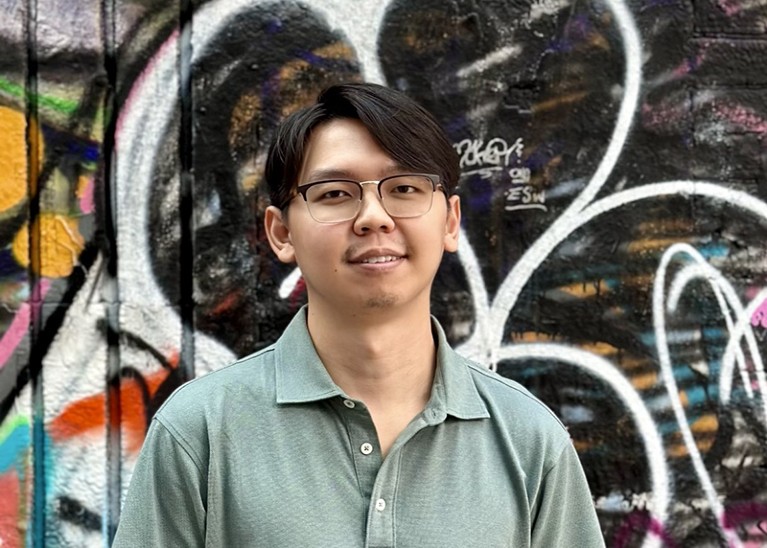
Qimin Liu is now an assistant professor. Credit: Qimin Liu
We had both obtained federal and private funding before — making us more competitive. We urge aspiring professors to prioritize their research contributions, external fellowship and grant applications and academic achievements above all.
To readers who’ve successfully navigated this process, many of our reflections and insights could seem obvious. However, this kind of advice can be the hardest to follow during a fast-moving job hunt, with several moving pieces involved and new considerations and job offers or advertisements emerging unexpectedly. Treat this as a checklist before beginning to fill out job applications.
Tips and tricks
Start your search early. Allow ample time to prepare for the job hunt; research potential options, such as jobs in academic medical centres, standard department positions or tenure-track jobs in related fields; and submit applications. Plan to reply to job ads long before the first deadline. Starting early gives you time to collect and incorporate feedback from mentors and colleagues.

Training: Free course on peer review
Prepare your networks. The academic job market can be unpredictable, with opportunities emerging unexpectedly. It is important to think about who can write letters for you — sometimes at short notice. Most of our applications required three letters of recommendation from all applicants. Others requested letters from only shortlisted candidates.
Plan ahead. The final drafts of materials took, on average, one to two months in total to prepare and polish. The initial drafts took about 8 hours, and the research statement required a total of 16 hours. (The research statement summarizes your research programme, the work you’ve done so far and what you plan to pursue in future. It can also highlight why a particular institution is well-suited to support your work.) Preparing drafted statements in advance made it easier to adapt them to different positions later — tweaking materials for specific positions took 30–60 minutes per application.
Research potential job opportunities. Don’t just rely on word-of-mouth or googling specific positions to find things you’re interested in applying to. Use online job boards (such as HigherEdJobs or Nature Careers ), and tap into your professional network by sending e-mails or LinkedIn messages to your mentors and colleagues, letting them know you’re on the job market. Scour social media and department websites to find available positions. We both posted on X (formerly Twitter) that we were job hunting, and several people reached out with opportunities.
Develop job application ‘templates’. Create a set of well-crafted templates for your application materials, such as cover letters and statements, on which you can easily fill in your name, relevant details and where you’ve previously worked. Having adaptable documents allowed us to respond quickly to new postings.
Tailor your application materials. Templates can take you only so far. Take the time to customize your application materials, including your CV, cover letter (each of ours was one page long) and research statement, to highlight your relevant skills, experiences and research contributions. Tailoring your materials to each position demonstrates genuine interest and increases your chances of standing out to hiring committees. Generic applications are easy for hiring managers to reject. Mentioning centres or institutes that align with your research; available resources, such as early-career programmes, that you want to take advantage of; and the names of people whom you are interested in working with can help to personalize your application materials.
Stay organized. Maintain a well-organized system to track application deadlines, requirements and submission statuses. Be ready to remind your letter writers to submit their recommendations. Keep a calendar or spreadsheet to ensure that all required materials are submitted on time and to track when to follow up. An example spreadsheet is provided below.
Practise for interviews and job talks. Run mock interviews with your peers or mentors. Practise answering common interview questions and develop concise, compelling responses that highlight your expertise, teaching abilities and fit. Treat these seriously — you’re likely to be nervous in the real interview, so try to recreate that while rehearsing, perhaps by inviting a relatively unknown colleague or professor to join the practice runs. V. R. recorded her job talk on Zoom and sent it to others for feedback.
Practising your job talk — a presentation of your academic research that is often a spoken version of your research statement — until you know it backwards and forwards will prepare you for the unexpected. In addition, rehearsing how you plan to respond to different questions, and practising saying that you want people to hold their questions until the end, can be helpful.
Prepare a start-up budget to get your lab running. Many academic positions include a start-up fund for incoming faculty members. It is typically used for summer salary and staffing or research costs. You might be asked for an estimated budget before, during or after the interview stage — so you should have one ready in advance. When preparing your budget, keep in mind the spending norms at the institution and for your discipline. Ask for more than you think you need, because this amount will often be reduced during negotiations.
As we look back on our job-hunting experiences, we are reminded of how much we grew in this process, in ways that are not related to just our jobs — and this growth continued in our interviews .
doi: https://doi.org/10.1038/d41586-024-01044-1
This is an article from the Nature Careers Community, a place for Nature readers to share their professional experiences and advice. Guest posts are encouraged .
Supplementary Information
- Example spreadsheet
Related Articles

- Research management

How I harnessed media engagement to supercharge my research career
Career Column 09 APR 24

Ready or not, AI is coming to science education — and students have opinions
Career Feature 08 APR 24

Three ways ChatGPT helps me in my academic writing
Career Column 08 APR 24
Brazil’s postgraduate funding model is about rectifying past inequalities
Correspondence 09 APR 24
Declining postdoc numbers threaten the future of US life science

How two PhD students overcame the odds to snag tenure-track jobs
Adopt universal standards for study adaptation to boost health, education and social-science research
Correspondence 02 APR 24
How can we make PhD training fit for the modern world? Broaden its philosophical foundations
Junior Group Leader Position at IMBA - Institute of Molecular Biotechnology
The Institute of Molecular Biotechnology (IMBA) is one of Europe’s leading institutes for basic research in the life sciences. IMBA is located on t...
Austria (AT)
IMBA - Institute of Molecular Biotechnology
Open Rank Faculty, Center for Public Health Genomics
Center for Public Health Genomics & UVA Comprehensive Cancer Center seek 2 tenure-track faculty members in Cancer Precision Medicine/Precision Health.
Charlottesville, Virginia
Center for Public Health Genomics at the University of Virginia
Husbandry Technician I
Memphis, Tennessee
St. Jude Children's Research Hospital (St. Jude)
Lead Researcher – Department of Bone Marrow Transplantation & Cellular Therapy
Researcher in the center for in vivo imaging and therapy.
Sign up for the Nature Briefing newsletter — what matters in science, free to your inbox daily.
Quick links
- Explore articles by subject
- Guide to authors
- Editorial policies
Melia Granath-Panelo (G3, Kajimura Lab)

Where are you from and what do you enjoy most about your hometown?
I am originally from the Bay Area, CA, but my parents moved to Sacramento CA when I was young, and then I moved back to the bay for undergrad and lived there for 6 years until I came to Boston. The food and the natural beauty of the CA coastline are my favorite parts for sure. The restaurants are excellent and there’s so much variety, and the fresh produce from local groceries and farmers markets is unparalleled.
What is your research focused on?
My research is focused on understanding how angiogenesis (the process of new blood vessel growth) occurs in our fat tissue after adrenergic stimuli such as cold exposure cause or contribute to the generation of beige fat cells, which are more metabolically active than the normal fat cells that we typically think about. The blood vessels that surround each cell are intrinsically important to cell function, but there’s a lot that we don’t know about what causes them to grow and how fat cells communicate to the vasculature.
What is your favorite part of your research?
I currently am doing a lot of whole-tissue microscopy and imaging, and creating pretty pictures is really satisfying. I also appreciate that my work contributes to the notion that the adipose is *way* more than just a storage organ—it is involved in everyday things that we do such as eating, exercising, and even sleeping. I have a deep personal interest in food and nutrition, and I enjoy bridging my personal interest in these topics with my specific research project and general field of study.
How do you relax when you’re not working?
I love baking, mainly sourdough bread, but am getting more into pastry. I also enjoy cooking and I have a recent goal to try to cook with ingredients I’ve never used before. I fervently explore the local restaurant/bakery scene and like to try new foods. Aside from all things food, I enjoy salsa dancing with friends, exercising, reading (mainly fiction), playing the piano, watching movies, and am trying to learn Spanish.
Tell us about an activity outside of lab you’re involved in and why it’s important to you
I serve on the leadership teams of the Harvard Graduate Women in Science and Engineering, and the Boston chapter of Nucleate, a student organization that aids in biotech company acceleration. In both of these roles, I work initiatives that promote the advancement of women in science. I also volunteer to mentor 6th-12th grade students and judge projects as part of the Massachusetts science fair program. Science fairs were my first exposure to science, and it’s important to me that kids are getting encouragement and support in STEM from an early age.
News from the School

Bethany Kotlar, PhD '24, studies how children fare when they're born to incarcerated mothers

Soccer, truffles, and exclamation points: Dean Baccarelli shares his story

Health care transformation in Africa highlighted at conference

COVID, four years in
Inside Donald Trump’s secret, long-shot plan to end the war in Ukraine
Foreign policy experts and some republicans warned that pressuring ukraine to cede land would reward putin.
Former president Donald Trump has privately said he could end Russia’s war in Ukraine by pressuring Ukraine to give up some territory, according to people familiar with the plan. Some foreign policy experts said Trump’s idea would reward Russian President Vladimir Putin and condone the violation of internationally recognized borders by force.
Trump’s proposal consists of pushing Ukraine to cede Crimea and the Donbas border region to Russia, according to people who discussed it with Trump or his advisers and spoke on the condition of anonymity because those conversations were confidential. That approach, which has not been previously reported, would dramatically reverse President Biden’s policy, which has emphasized curtailing Russian aggression and providing military aid to Ukraine.
As he seeks a return to power, the presumptive Republican nominee has frequently boasted that he could negotiate a peace deal between Russia and Ukraine within 24 hours if elected, even before taking office. But he has repeatedly declined to specify publicly how he would quickly settle a war that has raged for more than two years and killed tens of thousands of soldiers and civilians.
Trump-aligned foreign-policy thinkers have emphasized addressing threats to U.S. interests from China and seeking ways to reverse Russia’s increasing dependence on China for military, industrial and economic assistance. They have also embraced limiting NATO expansion.
Privately, Trump has said that he thinks both Russia and Ukraine “want to save face, they want a way out,” and that people in parts of Ukraine would be okay with being part of Russia, according to a person who has discussed the matter directly with Trump.
Accepting Russian control over parts of Ukraine would expand the reach of Putin’s dictatorship after what has been the biggest land war in Europe since World War II. Some of Trump’s supporters have been trying to persuade him against such an outcome.
“I’ve been spending 100 percent of my time talking to Trump about Ukraine,” said Sen. Lindsey Graham (R-S.C.), a onetime Trump critic turned ally. “He has to pay a price. He can’t win at the end of this,” Graham added, speaking of Putin.
Russia has previously declared it was annexing Ukrainian land beyond the Donbas region and Crimea, and Ukraine’s president, Volodymyr Zelensky, has said he would not accept surrendering any territory. Exchanging territory for a cease-fire would put Ukraine in a worse position without assurances that Russia would not rearm and resume hostilities, as it has in the past, said Emma Ashford, a senior fellow at the Stimson Center, a nonpartisan think tank. “That is a terrible deal,” she said of Trump’s proposal.
The Trump campaign declined to directly address questions for this article. “Any speculation about President Trump’s plan is coming from unnamed and uninformed sources who have no idea what is going on or what will happen,” campaign spokeswoman Karoline Leavitt said in a statement. “President Trump is the only one talking about stopping the killing.”
Biden said in his State of the Union address that Putin is “on the march, invading Ukraine and sowing chaos throughout Europe and beyond,” and that Ukraine is trying to defend itself. The president has outlined a long-term plan of support for Ukraine that would build up its military capabilities this year so that it is in a better place to go on the offensive next year. But U.S. aid is already in jeopardy as House Speaker Mike Johnson (R-La.) faces a revolt from Republican hard-liners who are digging in against any more funding and clamoring to oust him.
Out of office, Trump has pressured congressional Republicans to resist additional U.S. support for Ukraine’s war effort and a return to the White House would significantly expand his influence over the debate. Seeing the political dynamics in the United States, European allies have jump-started military industry to a point where they hope to supplant a significant portion of the current U.S. assistance to Kyiv. But analysts said that realistically, Ukraine’s capacity to keep fighting would be weakened if Trump succeeds in blocking further U.S. aid.
In many ways, Trump’s plan is in line with his approach as president. His preference for splashy summits over policy details, confidence in his own negotiating skills and impatience with conventional diplomatic protocols were all hallmarks of how he approached foreign affairs in his first term.
In his eight years as the GOP’s standard-bearer, Trump has led a stark shift in the party’s prevailing orientation to become more skeptical of foreign intervention such as military aid to Ukraine. Trump has consistently complimented Putin, expressed admiration for his dictatorial rule and gone out of his way to avoid criticizing him, most recently for the death in jail of political opponent Alexei Navalny. He has not called for the release of Evan Gershkovich, the Wall Street Journal reporter held in Russia for a year without charges or a trial.
Trump has refused to acknowledge Russia’s interference in the 2016 election and falsely blamed Ukraine for trying to help Democratic rival Hillary Clinton — a smear spread by Russian spy services. His attempt in 2019 to withhold aid to Ukraine unless Zelensky announced an investigation into Biden led to Trump’s first impeachment.
In a phone call with Zelensky that year that Trump said was “perfect,” the U.S. president pressured Zelensky to investigate Biden and the discredited theory that Ukraine and not Russia sought to interfere with the 2016 election. The GOP-controlled Senate later acquitted Trump.
“Former president Trump’s inexplicable and admiring relationship with Putin, along with his unprecedented hostility to NATO, cannot give Europe or Ukraine any confidence in his dealings with Russia,” said Tom Donilon, President Barack Obama’s national security adviser. “Trump’s comments encouraging Russia to do whatever it wants with our European allies are among the most unsettling and dangerous statements made by a major party candidate for president. His position represents a clear and present danger to U.S. and European security.”
Graham said he has warned against giving Russia desired land and wants Trump to embrace a pathway forward for Ukraine to join NATO.
“The way you end this war to me is you make sure Ukraine gets into NATO and the E.U.,” he said. “He doesn’t say much about that. I don’t know if he’s thought too much about it.”
In his public promises to end the war, Trump has pointedly withheld the specifics on how he would negotiate with Putin and Zelensky. “I will say certain things to each one of them that I wouldn’t say to the rest of the world, and that’s why I can’t tell you much more than that,” Trump said in a March interview with former aide Sebastian Gorka.
His public silence on his negotiating tack has left room for others to fill in the blanks. Hungarian Prime Minister Viktor Orban, who has antagonized European allies with his autocratic and pro-Russian tendencies, met with Trump last month and afterward claimed Trump told him he will force the war to end because “he will not give a penny” to help Ukraine. Orban’s statement was false, but the former president didn’t want to publicly contradict him after entertaining him all night at his Mar-a-Lago Club and admiring his toughness and anti-immigration positions, according to a person close to Trump, who spoke on the condition of anonymity to describe a private conversation.
During the meeting, Orban spoke at length about Soviet history, Russia’s desire for Ukrainian territory and the military challenges facing Ukraine, the person said. Trump listened but was noncommittal, the person said. An Orban spokesman did not respond to a request for comment.
Word of Trump’s plan for Ukraine circulated in Washington last November at a meeting at the Heritage Foundation between right-of-center foreign policy figures and a visiting delegation from the European Council on Foreign Relations. Former Trump White House aide Michael Anton described the expected contours of Trump’s peace plan as Ukraine ceding territory in Crimea and Donbas, limiting NATO expansion and enticing Putin to loosen his growing reliance on China, according to multiple people present for the meeting, who like others spoke on the condition of anonymity to describe a private discussion.
Reached by phone in March, Anton said he hadn’t spoken with Trump in 18 to 24 months and denied knowing anything about Trump’s plan for Ukraine. He did not respond to further questions.
James Carafano, a Heritage Foundation fellow who convened the meeting, declined to comment on the private discussion but criticized the idea of splitting Russia from China. “That is stupid idea 101,” he said. “Anything you could give Russia that they would really value would compromise all your other interests. The way to deal with the Russia-China relationship is to make Russia a weaker partner.”
Peeling Russia away from China would presumably involve sanctions relief, since the Kremlin has turned toward Beijing to try to offset broad-based Western sanctions on its energy, defense and financial sectors, said Jeremy Shapiro, head of the Washington office of the European Council on Foreign Relations, who brought the group’s delegation to the meeting in November. Shapiro declined to comment on the specifics of the conversation, citing ground rules of the November event that prohibited attributing anything that was said, but he said that Trump’s Ukraine peace plan did not appear to be detailed.
“Trump people feel as if one of the great sins of the Ukrainian war and the Russia policy, generally speaking, is to push Russia toward China and to make it all the more dependent on China,” he said. Trump’s “fundamental approach with all things is to get men in a room together to discuss,” without necessarily having detailed plans in advance, Shapiro said.
Russia experts doubted Trump’s peace efforts could succeed. Fiona Hill, a senior fellow at the Brookings Institution who was Trump’s top Russia adviser and has since emerged as a prominent critic, said it reminded her of 2017 — when unvetted foreigners and business executives approached Trump with various peace plans, and he thought he could sit down with Russia and Ukraine and mediate on the strength of his personal charisma.
Trump’s team “is thinking about this very much in silos, that this is just a Ukraine-Russia thing,” Hill said. “They think of it as a territorial dispute, rather than one about the whole future of European security and the world order by extension.”
Even drawing an armistice line might not be so straightforward. The Kremlin in September 2022 declared that it was annexing four southern and eastern Ukrainian provinces, including the Donbas region but extending well beyond it. Since Kyiv still controls much of the territory, any attempt to resolve the war with territorial concessions is likely to involve extensive haggling — unless both sides simply agree to freeze the front lines that are in place at the moment of a deal.
Ukraine and European allies would probably resist Trump’s efforts to strike a deal with Moscow, Hill said. She added that the United States has limited leverage for a unilateral deal because meaningful sanctions relief would rely on European cooperation.
“No amount of leverage the United States has is likely to compel Ukrainian leadership to engage in policies that would constitute domestic political suicide,” said Michael Kofman, an analyst of the Russia-Ukraine war at the Carnegie Endowment for International Peace, a nonpartisan research center. “And no amount of leverage the United States has can compel Ukraine to cede territory or engage in these types of concessions. This is a situation where if you’re willing to give a hand, the other side will very quickly want the rest of the arm.”
Election 2024
Get the latest news on the 2024 election from our reporters on the campaign trail and in Washington.
Who is running? President Biden and Donald Trump secured their parties’ nominations for the presidency , formalizing a general-election rematch.
Key dates and events: From January to June, voters in all states and U.S. territories will pick their party’s nominee for president ahead of the summer conventions. Here are key dates and events on the 2024 election calendar .
Abortion and the election: Voters in a dozen states in this pivotal election year could decide the fate of abortion rights with constitutional amendments on the ballot. Biden supports legal access to abortion , and he has encouraged Congress to pass a law that would codify abortion rights nationwide. After months of mixed signals about his position, Trump said the issue should be left to states . Here’s how Trump’s abortion stance has shifted over the years.
- Harris, in Arizona, hammers Trump on abortion policy April 12, 2024 Harris, in Arizona, hammers Trump on abortion policy April 12, 2024
- What Donald Trump wants in his next vice president — and who he’s considering April 12, 2024 What Donald Trump wants in his next vice president — and who he’s considering April 12, 2024
- States warn Biden could miss ballot. Dems say exceptions have been made for GOP. April 11, 2024 States warn Biden could miss ballot. Dems say exceptions have been made for GOP. April 11, 2024

- Solar Eclipse 2024
10 Surprising Facts About the 2024 Solar Eclipse
A total solar eclipse will sweep across North America on Monday, April 8, offering a spectacle for tens of millions of people who live in its path and others who will travel to see it.
A solar eclipse occurs during the new moon phase, when the moon passes between Earth and the sun, casting a shadow on Earth and totally or partially blocking our view of the sun. While an average of two solar eclipses happen every year, a particular spot on Earth is only in the path of totality every 375 years on average, Astronomy reported .
“Eclipses themselves aren't rare, it's just eclipses at your house are pretty rare,” John Gianforte, director of the University of New Hampshire Observatory, tells TIME. If you stay in your hometown, you may never spot one, but if you’re willing to travel, you can witness multiple. Gianforte has seen five eclipses and intends to travel to Texas this year, where the weather prospects are better.
One fun part of experiencing an eclipse can be watching the people around you. “They may yell, they scream, they cry, they hug each other, and that’s because it’s such an amazingly beautiful event,” Gianforte, who also serves as an extension associate professor of space science education, notes. “Everyone should see at least one in their life, because they’re just so spectacular. They are emotion-evoking natural events.”
Here are 10 surprising facts about the science behind the phenomenon, what makes 2024’s solar eclipse unique, and what to expect.
The total eclipse starts in the Pacific Ocean and ends in the Atlantic
The darker, inner shadow the moon casts is called the umbra , in which you can see a rarer total eclipse. The outer, lighter second shadow is called the penumbra, under which you will see a partial eclipse visible in more locations.
The total eclipse starts at 12:39 p.m. Eastern Time, a bit more than 620 miles south of the Republic of Kiribati in the Pacific Ocean, according to Astronomy . The umbra remains in contact with Earth’s surface for three hours and 16 minutes until 3:55 p.m. when it ends in the Atlantic Ocean, roughly 340 miles southwest of Ireland.
The umbra enters the U.S. at the Mexican border just south of Eagle Pass, Texas, and leaves just north of Houlton, Maine, with one hour and eight minutes between entry and exit, the National Aeronautics and Space Administration (NASA) tells TIME in an email.
Mexico will see the longest totality during the eclipse
The longest totality will extend for four minutes and 28 seconds on a 350-mile-long swath near the centerline of the eclipse, including west of Torreón, Mexico, according to NASA.
In the U.S., some areas of Texas will catch nearly equally long total eclipses. For example, in Fredericksburg, totality will last four minutes and 23 seconds—and that gets slightly longer if you travel west, the agency tells TIME. Most places along the centerline will see totality lasting between three and a half minutes and four minutes.

More people currently live in the path of totality compared to the last eclipse
An estimated 31.6 million people live in the path of totality for 2024’s solar eclipse, compared to 12 million during the last solar eclipse that crossed the U.S. in 2017, per NASA .
The path of totality is much wider than in 2017, and this year’s eclipse is also passing over more cities and densely populated areas than last time.
A part of the sun which is typically hidden will reveal itself
Solar eclipses allow for a glimpse of the sun’s corona —the outermost atmosphere of the star that is normally not visible to humans because of the sun’s brightness.
The corona consists of wispy, white streamers of plasma—charged gas—that radiate from the sun. The corona is much hotter than the sun's surface —about 1 million degrees Celsius (1.8 million degrees Fahrenheit) compared to 5,500 degrees Celsius (9,940 degrees Fahrenheit).
The sun will be near its more dramatic solar maximum
During the 2024 eclipse, the sun will be near “solar maximum.” This is the most active phase of a roughly 11-year solar cycle, which might lead to more prominent and evident sun activity, Gianforte tells TIME.
“We're in a very active state of the sun, which makes eclipses more exciting, and [means there is] more to look forward to during the total phase of the eclipse,” he explains.
People should look for an extended, active corona with more spikes and maybe some curls in it, keeping an eye out for prominences , pink explosions of plasma that leap off the sun’s surface and are pulled back by the sun’s magnetic field, and streamers coming off the sun.
Streamers “are a beautiful, beautiful shade of pink, and silhouetted against the black, new moon that's passing across the disk of the sun, it makes them stand out very well. So it's really just a beautiful sight to look up at the totally eclipsed sun,” Gianforte says.

Two planets—and maybe a comet—could also be spotted
Venus will be visible 15 degrees west-southwest of the sun 10 minutes before totality, according to Astronomy. Jupiter will also appear 30 degrees to the east-northeast of the sun during totality, or perhaps a few minutes before. Venus is expected to shine more than five times as bright as Jupiter.
Another celestial object that may be visible is Comet 12P/Pons-Brooks , about six degrees to the right of Jupiter. Gianforte says the comet, with its distinctive circular cloud of gas and a long tail, has been “really putting on a great show in the sky” ahead of the eclipse.
The eclipse can cause a “360-degree sunset”
A solar eclipse can cause a sunset-like glow in every direction—called a “360-degree sunset”—which you might notice during the 2024 eclipse, NASA said . The effect is caused by light from the sun in areas outside of the path of totality and only lasts as long as totality.
The temperature will drop
When the sun is blocked out, the temperature drops noticeably. During the last total solar eclipse in the U.S. in 2017, the National Weather Service recorded that temperature dropped as much as 10 degrees Fahrenheit. In Carbondale, Ill. for example, the temperature dropped from a peak of 90 degrees Fahrenheit just before totality to 84 degrees during totality.
Wildlife may act differently
When the sky suddenly becomes black as though nighttime, confused “animals, dogs, cats, birds do act very differently ,” Gianforte says.
In the 2017 eclipse, scientists tracked that many flying creatures began returning to the ground or other perches up to 50 minutes before totality. Seeking shelter is a natural response to a storm or weather conditions that can prove deadly for small flying creatures, the report said. Then right before totality, a group of flying creatures changed their behavior again—suddenly taking flight before quickly settling back into their perches again.
There will be a long wait for the next total eclipse in the U.S.
The next total eclipse in the U.S. won’t happen until March 30, 2033, when totality will reportedly only cross parts of Alaska . The next eclipse in the 48 contiguous states is expected to occur on Aug. 12, 2044, with parts of Montana and North Dakota experiencing totality.
More Must-Reads From TIME
- Exclusive: Google Workers Revolt Over $1.2 Billion Contract With Israel
- Jane Fonda Champions Climate Action for Every Generation
- Stop Looking for Your Forever Home
- The Sympathizer Counters 50 Years of Hollywood Vietnam War Narratives
- The Bliss of Seeing the Eclipse From Cleveland
- Hormonal Birth Control Doesn’t Deserve Its Bad Reputation
- The Best TV Shows to Watch on Peacock
- Want Weekly Recs on What to Watch, Read, and More? Sign Up for Worth Your Time
Contact us at [email protected]
Your last-minute guide to Monday's total solar eclipse

A total solar eclipse will cross North America on Monday , offering millions a rare opportunity to see afternoon skies temporarily darken as the moon blocks the face of the sun.
Tune into NBC News NOW as Lester Holt hosts a two-hour special at 2 p.m. ET Monday from Indianapolis Motor Speedway.
The eclipse's path fortuitously cuts across Mexico, 15 U.S. states and a small part of eastern Canada. In all other states in the continental U.S., viewers will be treated to a partial solar eclipse, with the moon appearing to take a bite out of the sun and obscuring part of its light.
Here’s everything you need to know about the rare celestial event.
What is a solar eclipse?
Solar eclipses occur when the sun, moon and Earth align. The moon passes between Earth and sun, temporarily blocking the sun’s light and casting a shadow on Earth.
A total solar eclipse is when the moon fully obscures the sun, whereas a partial solar eclipse means it blocks just a portion of the sun’s face.
Solar eclipses occur only with the new moon. Because the moon’s orbit around Earth is tilted, the three bodies don’t always line up in a way that creates an eclipse.
“Imagine if the moon’s orbit were in the plane of Earth’s orbit around the sun — if that were the case, then every new moon, you’d have a total solar eclipse and every full moon, you’d have a lunar eclipse,” Neil DeGrasse Tyson, director of the Hayden Planetarium at the American Museum of Natural History, told NBC News. “So, because things don’t always align, it lends to the rarity of the event and the specialness of the event.”
Where and when will the eclipse be visible?
This year’s eclipse will follow a slightly wider path over more populated areas of the continental U.S. than other total solar eclipses have in the recent past.
NASA estimates that 31.6 million people live within what’s known as the path of totality, where the total solar eclipse will be visible. An additional 150 million people live within 200 miles of the path, according to the agency.
The path travels through Texas, Oklahoma, Arkansas, Missouri, Illinois, Kentucky, Indiana, Ohio, Pennsylvania, New York, Vermont, New Hampshire and Maine. Tiny parts of Michigan and Tennessee will also be able to witness totality if conditions are clear.
After the eclipse crosses into Canada, it will pass over southern Ontario, Quebec, New Brunswick, Prince Edward Island and Cape Breton, at the eastern end of Nova Scotia.
Those outside the path of totality can still take part in the astronomical event by viewing a partial solar eclipse — visible throughout all 48 states of the contiguous U.S. — or a NASA livestream.
The timing, including how long totality lasts, depends on the location, but some spots will see the moon fully cover the sun for up to 4 minutes and 28 seconds.
Below is a list of timings for some cities along the path of totality, as provided by NASA . A number of other resources, including NationalEclipse.com and TimeandDate.com , can also help people plan.
- Dallas: Partial eclipse begins at 12:23 p.m. CT and totality at 1:40 p.m.
- Little Rock, Arkansas: Partial eclipse begins at 12:33 p.m. CT and totality at 1:51 p.m.
- Cleveland: Partial eclipse begins at 1:59 p.m. ET and totality at 3:13 p.m.
- Buffalo, New York: Partial eclipse begins at 2:04 p.m. ET and totality at 3:18 p.m.
- Lancaster, New Hampshire: Partial eclipse begins at 2:16 p.m. ET and totality at 3:27 p.m.

How to safely view a solar eclipse
It is never safe to gaze directly at the sun, even when it is partly or mostly covered by the moon. Special eclipse glasses or pinhole projectors are required to safely view solar eclipses and prevent eye damage. Failing to take the proper precautions can result in severe eye injury, according to NASA .
Eclipse glasses are thousands of times darker than normal sunglasses and specially made to enable wearers to look at the sun during these kinds of celestial events.
Sky-watchers should also never view any part of the sun through binoculars, telescopes or camera lenses unless they have specific solar filters attached. Eclipse glasses should not be used with these devices, as they will not provide adequate protection.
However, during the few minutes of totality, when the moon is fully blocking the sun, it is safe to look with the naked eye.

Beware of fake eclipse glasses. On legitimate pairs, the lenses should have a silver appearance on the front and be black on the inside. The manufacturer’s name and address should be clearly labeled, and they should not be torn or punctured. Check, as well, for the ISO logo and the code “IS 12312-2” printed on the inside.
If you don’t have eclipse glasses, you can make a homemade pinhole projector, which lets sunlight in through a small hole, focuses it and projects it onto a piece of paper, wall or other surface to create an image of the sun that is safe to look at.
All you need is two pieces of white cardboard or plain white paper, aluminum foil and a pin or thumbtack. Cut a 1- to 2-inch square or rectangle out of the center of a piece of white paper or cardboard. Tape aluminum foil over that cut-out shape, then use a pin or thumbtack to poke a tiny hole in the foil.
During the eclipse, place a second piece of white paper or cardboard on the ground as a screen and hold the projector with the foil facing up and your back to the sun. Adjusting how far you hold the projector from the second piece of paper will alter the size of the image on the makeshift screen.
What to look for while viewing the total solar eclipse
For people along the path of totality, there are some fun milestones to keep track of as the total solar eclipse unfolds.
As the eclipse progresses and the sun gets thinner in the sky, it will start to get eerily dark, according to Tyson.

When the last beams of sunlight are about to become obscured, look out for the “diamond ring effect”: The sun’s atmosphere will appear as an illuminated halo, and the last light still visible will look like the diamond of a giant ring.
As the sunlight decreases even further, an effect known as Baily’s beads will be created by the moon’s rugged terrain. Tiny “beads” of light will be visible for only a few seconds around the dark moon, as the last bits of sunlight peer through the moon’s mountains and valleys.
When the moon is fully blocking the sun, it is safe to remove eclipse glasses and look at the total solar eclipse with the naked eye.

Some lucky sky-watchers may even catch a glimpse of a comet .
Comet 12P/Pons-Brooks — nicknamed the “ devil comet ” because an eruption last year left it with two distinct trails of gas and ice in the shape of devil horns — is currently visible from the Northern Hemisphere as it swings through the inner solar system.
The comet can be seen in the early evenings by gazing toward the west-northwest horizon. During the eclipse, when skies darken during totality, it may be possible to see the comet near Jupiter, but its visibility will depend on whether it’s in the middle of an outburst and thus brighter than normal.
Most likely, all eyes will be on the alignment of the moon and sun.
“Most people won’t even notice,” Tyson said. “But if you know to look, it’s there.”
When is the next solar eclipse?
The next total solar eclipse will be in 2026, but it will mostly pass over the Arctic Ocean, with some visibility in Greenland, Iceland, Portugal and northern Spain. In 2027, a total solar eclipse will be visible in Spain and a swath of northern Africa.
The next total solar eclipse visible from North America will be in 2033, but only over Alaska. Then in 2044, a total solar eclipse will cross Montana, North Dakota, South Dakota, parts of Canada and Greenland.
The next total solar eclipse to cross the continental U.S. coast-to-coast in will occur in 2045. The path of totality for that eclipse will cut through California, Nevada, Utah, Colorado, New Mexico, Oklahoma, Kansas, Texas, Arkansas, Missouri, Mississippi, Louisiana, Alabama, Georgia and Florida.
Denise Chow is a reporter for NBC News Science focused on general science and climate change.
Lucas Thompson is a content producer for the NBC News Climate Unit.

IMAGES
VIDEO
COMMENTS
61. Each situation is different, and it might be hard to generalise, but roughly speaking, you can see a PhD thesis as requiring about 3-4 years working full time. For some people it might be a bit less, for others a bit more, but that's a good average. In addition, a PhD includes of course "technical" work, but also "academic training", such ...
I am doing it right now: full time PhD while working part time. It's doable, but it might be different for different countries and different fields. I receive a stipend that prevents me from working for more than 10 hrs a week, but that only applies to normal business hours. So I simply do most of my work in the after hours.
A part time PhD will also have a more manageable workload, and supervisors will usually be more experience in providing support to working students. But keep in mind that some PhD part time programmes will not be eligible for financial aid or funding, at which point part time study may no longer be personally worth it. 2. Know Your Job
Master Academia. 11 minutes read. Doing a PhD part-time can be an attractive option for many reasons. However, part-time PhDs are less common than full-time ones, and there tends to be a lack of information on this option. This guide to part-time PhDs answers the most common questions that prospective part-time PhD candidates have. Contents.
The short answer is yes, and here's why. Practical doctorates are different than their PhD counterparts: they're designed specifically for working professionals. Many of them are part-time and either fully or partially online to begin with, and students have active careers working with patients, clients, or students.
Doing a PhD while working: full time, part time or casual? Chelsea is quick to warn us that both working and researching full time is a recipe for disaster. "A full-time PhD could not be done whilst working full time," she says. Doing both part time is feasible, but only if you're happy to wait a few extra years to see the fruits of your ...
The simple answer is yes, you can work while studying a PhD and in fact, many do. The most common form of work is teaching during your PhD. But some students may also have part-time (or full-time jobs outside of the university). Depending on the amount of work you plan to undertake, you will have to consider whether it would be better to do ...
The average tuition fee for part time PhD study in the UK is approximately £2,356 per academic year for home students, and between £8,000 to £12,500 for international students. This is typically 50% of the fee charged for an equivalent full time doctorate. However, a handful of universities use a prorated fee of up to 60% so it's important ...
The main difference between part-time PhDs and full-time study is the length of the course. By the end of the PhD you will have completed the same amount of work and produced a full length thesis.. While most students in our Pulse survey data are interested in full-time PhDs, those in the upper age groups (45+ years) are more likely to consider part-time (37% versus 15% between 18-44 year olds).
A part-time PhD? Yes, it can be done and it can be incredibly rewarding writes, Arthur Krebbers. I've experienced many unexpected hurdles while doing my PhD part-time and I'm sure that you will too. It is often difficult to keep your spirits high while doing a part-time PhD but the reward is substantial.
The short answer is: Yes, it's possible—and many people have done it. However, it can also be quite complicated. After all, balancing so many significant commitments can be a bit stressful. If you're thinking about earning your PhD while holding down a job, you'll need to do some careful planning and have sustained motivation to finish ...
Credit: Shutterstock. I have had 11 part-time jobs between my final year of school and completing my PhD programme. These varied in scope, pay, fun and responsibility, but most fell into in ...
Arthur Krebbers successfully completed his doctorate whilst working a demanding job in banking. Here he shares some tips for other students. "So how exactly did you get your PhD part-time?". I am sometimes asked. "Simple, I just didn't watch any TV for 6 years" is my first, facetious, response. Then when someone digs deeper I gladly ...
By Jamie Foster November 5, 2023. Earning a PhD is the pinnacle of academic achievement in computer science, opening doors to research, teaching, and leadership roles. But taking 4+ years off work for a full-time program isn't feasible for everyone. Part-time PhD options allow professionals to attain this goal while continuing their careers.
They will need to understand your priorities and your study pattern, which is likely to involve short bursts of activity. Look for someone experienced and who can understand your end goals. You ...
Yes, part time PhD programs do exist. Universities know that many people have packed schedules. To accommodate busy students, some schools give the option of part-time enrollment in PhD programs online or on-campus.. The idea is that you may work your way through one of these programs while still living at home and holding a regular job — no uprooting your life required.
Useful tips. 1. If you get a job or collaboration that is somehow related to your PhD, this situation will be very helpful for your overall learning performance. It will keep you focused on thinking and finding new ideas for your PhD thesis and it will increase the chances of being a top PhD student. 2.
I've been working full time while doing a PhD part time (social sciences). I completed my coursework in 2 years like the rest of my cohort, though, by taking a few classes over the summer for my specialization. I'm now in year 5 and have finally moved on past candidacy after 2.5 years of next-to-no progress.
The best PhD student part-time jobs include university-based jobs such as tutoring, marking exams, running workshops or laboratories, and working in student services. You can also do online part-time jobs such as user testing to earn a small amount of extra income per month. Having a part-time job as a PhD student is essential if you are a self ...
Part-time PhD students may also be working, either full- or part-time. This gives you the opportunity to get hands-on experience with a wider variety of tasks and projects, and it can be a welcome distraction from PhD work. 2. Employability. Following on from advantage 1, your experience is a great CV booster.
A full-time PhD is regarded as a full-time commitment. So anything other than a supplementary job for a few hours per week is challenging. Some students start with a full-time PhD and then move to studying the PhD part-time. So you would need to discuss this with your university first. Planning to study a part-time PhD takes longer overall but ...
A part-time PhD would enable a student to take up research projects and teaching assistantships alongside the study. This ensures additional income while you do your doctoral work. If you have family responsibilities and are not able to focus full-time on your research, then a part-time PhD offers potential.
A part-time PhD in the UK is an academic programme that covers the same learning material as a full-time PhD, but requires that you spend less time every week engaging in research. The main difference between these two variants is that a part-time PhD takes more time to complete. For example, while a standard PhD takes between three and four ...
The final drafts of materials took, on average, one to two months in total to prepare and polish. The initial drafts took about 8 hours, and the research statement required a total of 16 hours ...
I currently am doing a lot of whole-tissue microscopy and imaging, and creating pretty pictures is really satisfying. I also appreciate that my work contributes to the notion that the adipose is *way* more than just a storage organ—it is involved in everyday things that we do such as eating, exercising, and even sleeping.
That said, Reiff says the ability to view an eclipse during cloudy weather depends on the extent of the clouds. "If there's widespread thunderclouds, I'm going to stay where I am," she says.
In a note to clients published Friday, titled "Why we have both strong growth and lower inflation," Goldman Sachs chief U.S. economist David Mericle said rising immigration had boosted labor ...
11 min. Former president Donald Trump has privately said he could end Russia's war in Ukraine by pressuring Ukraine to give up some territory, according to people familiar with the plan. Some ...
By Mallory Moench. April 6, 2024 8:31 AM EDT. A total solar eclipse will sweep across North America on Monday, April 8, offering a spectacle for tens of millions of people who live in its path and ...
The eclipse's path fortuitously cuts across Mexico, 15 U.S. states and a small part of eastern Canada. In all other states in the continental U.S., viewers will be treated to a partial solar ...